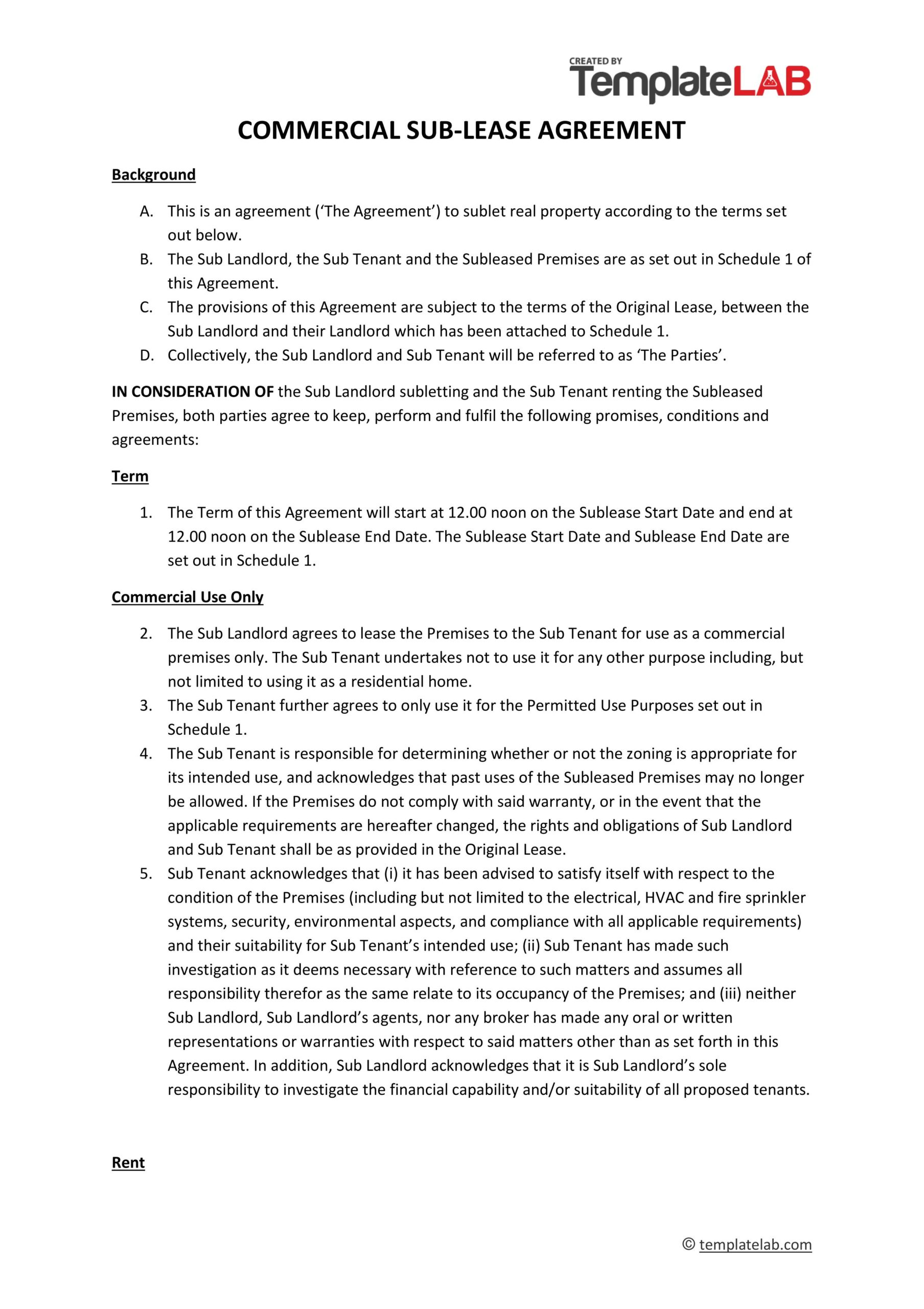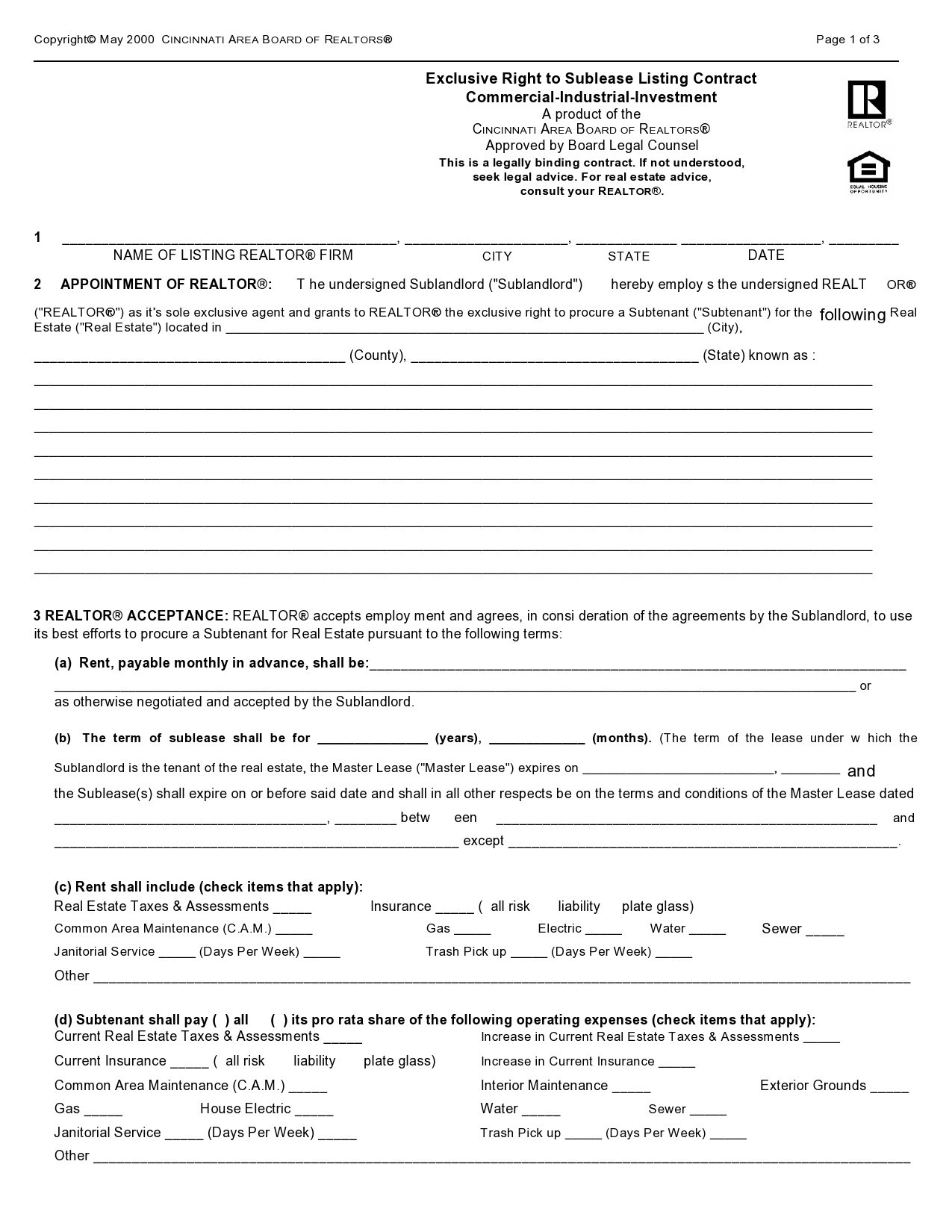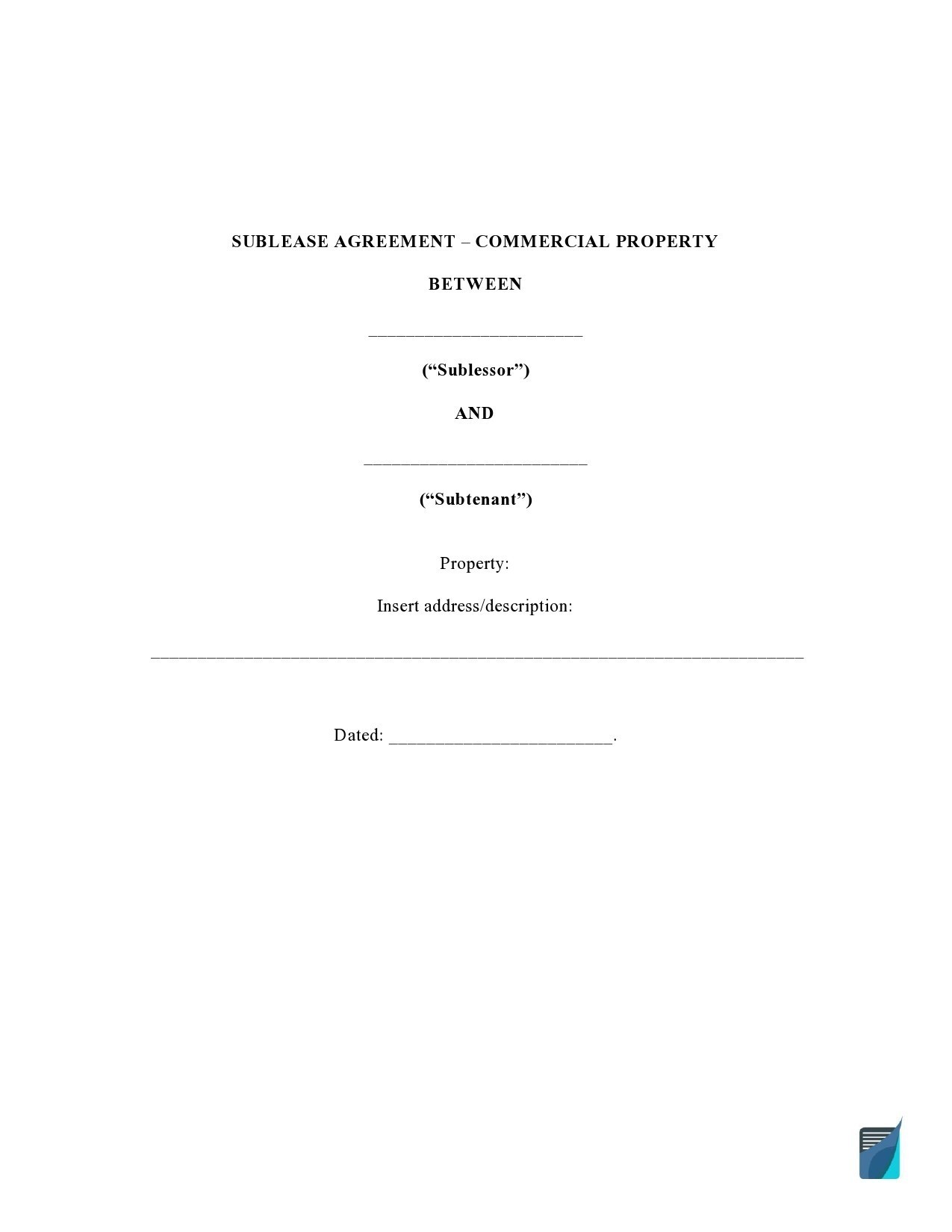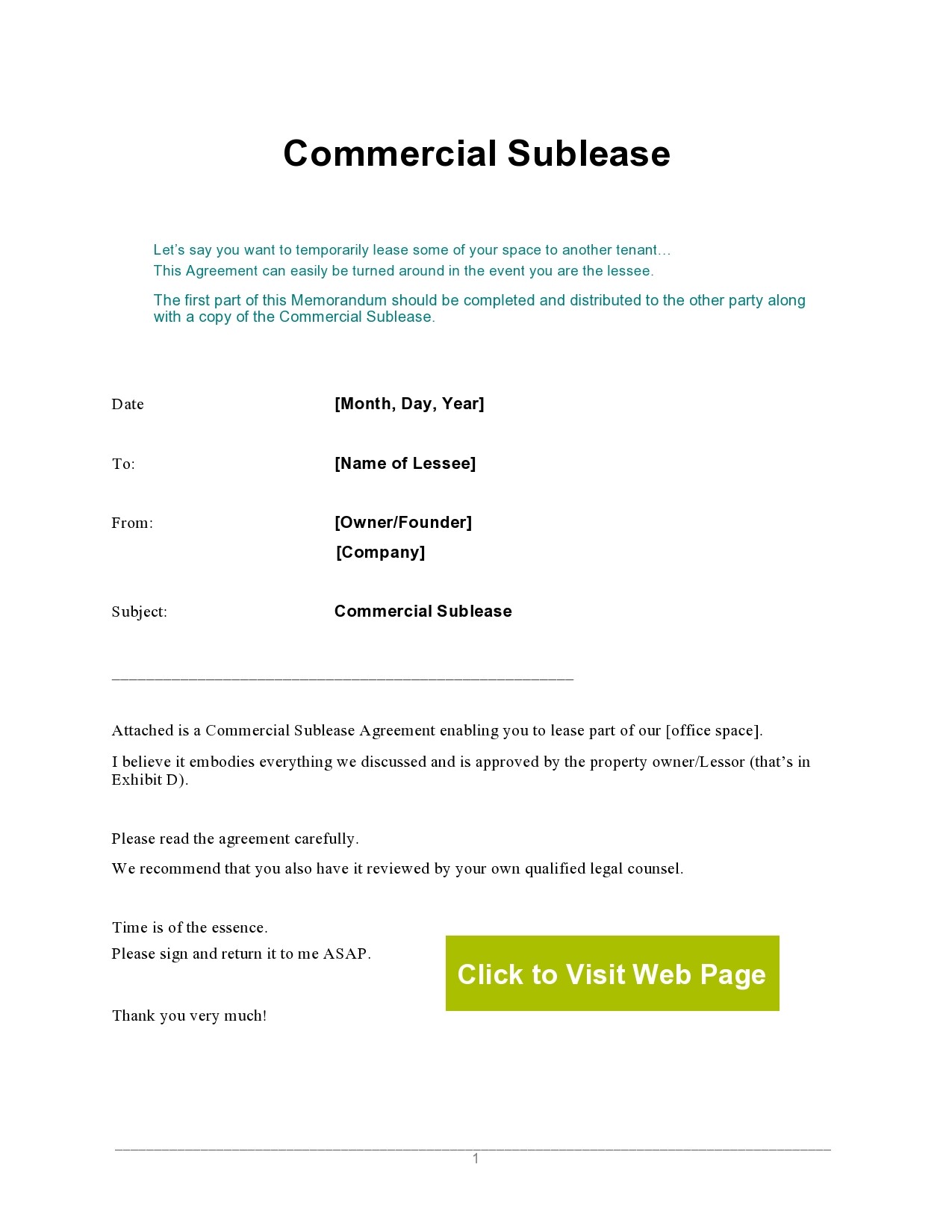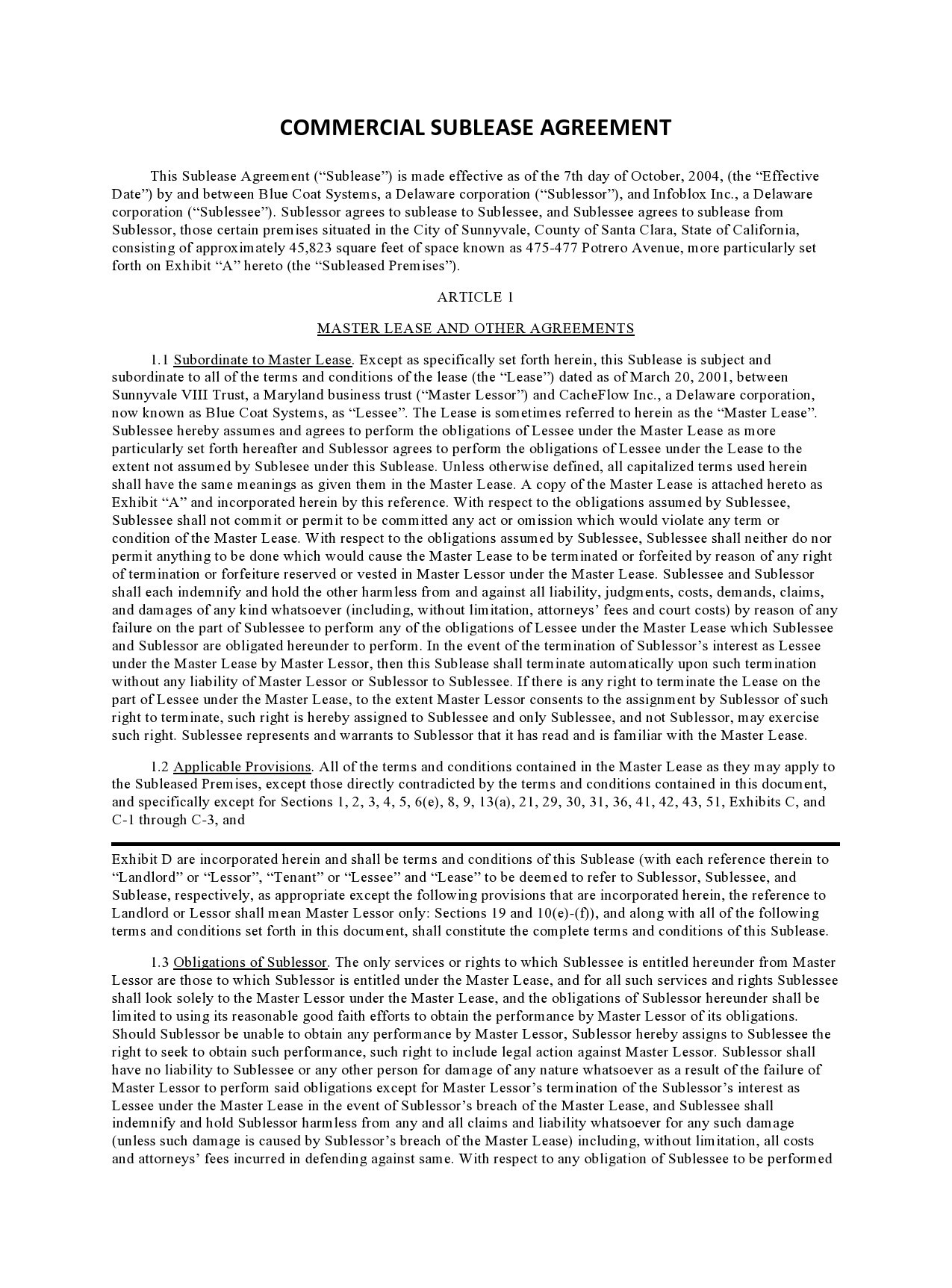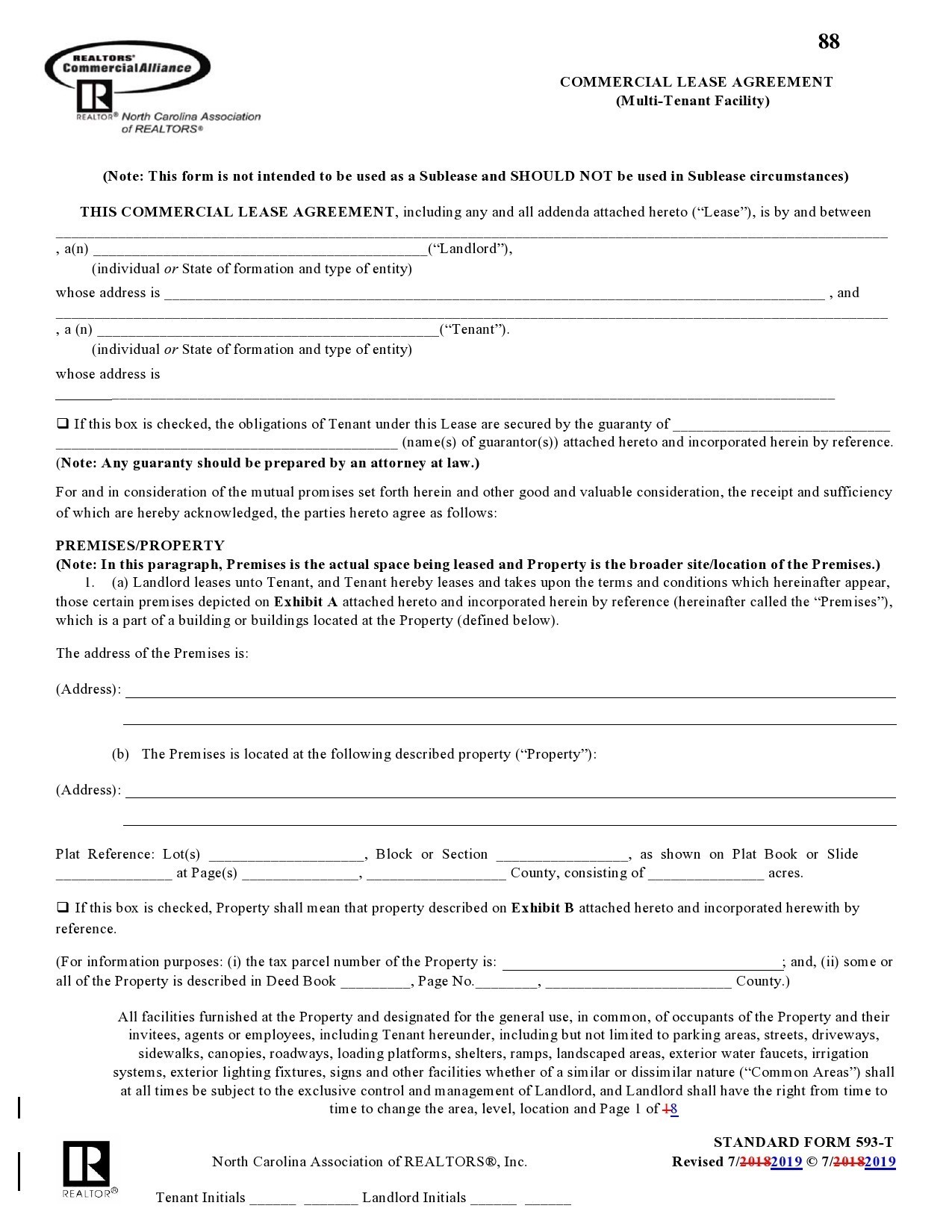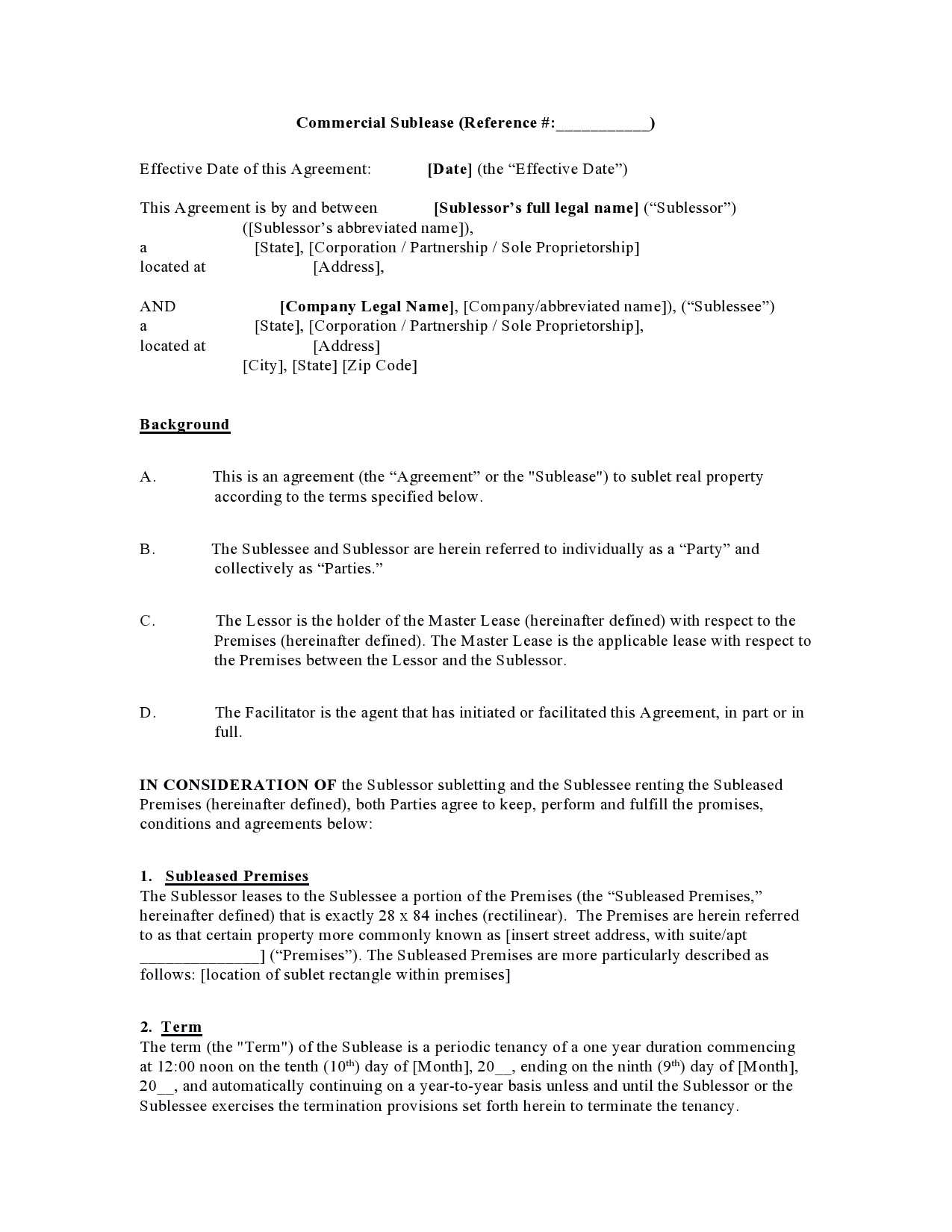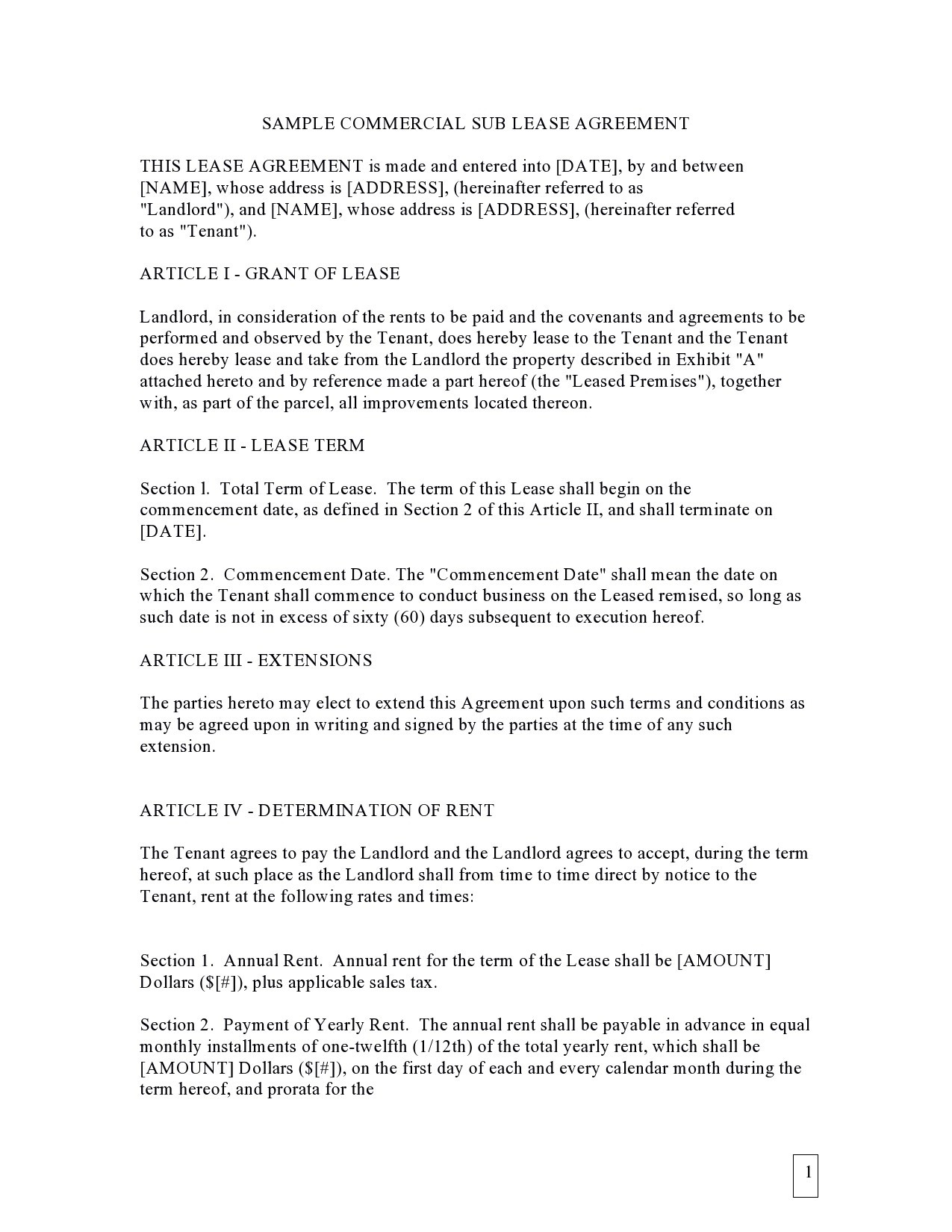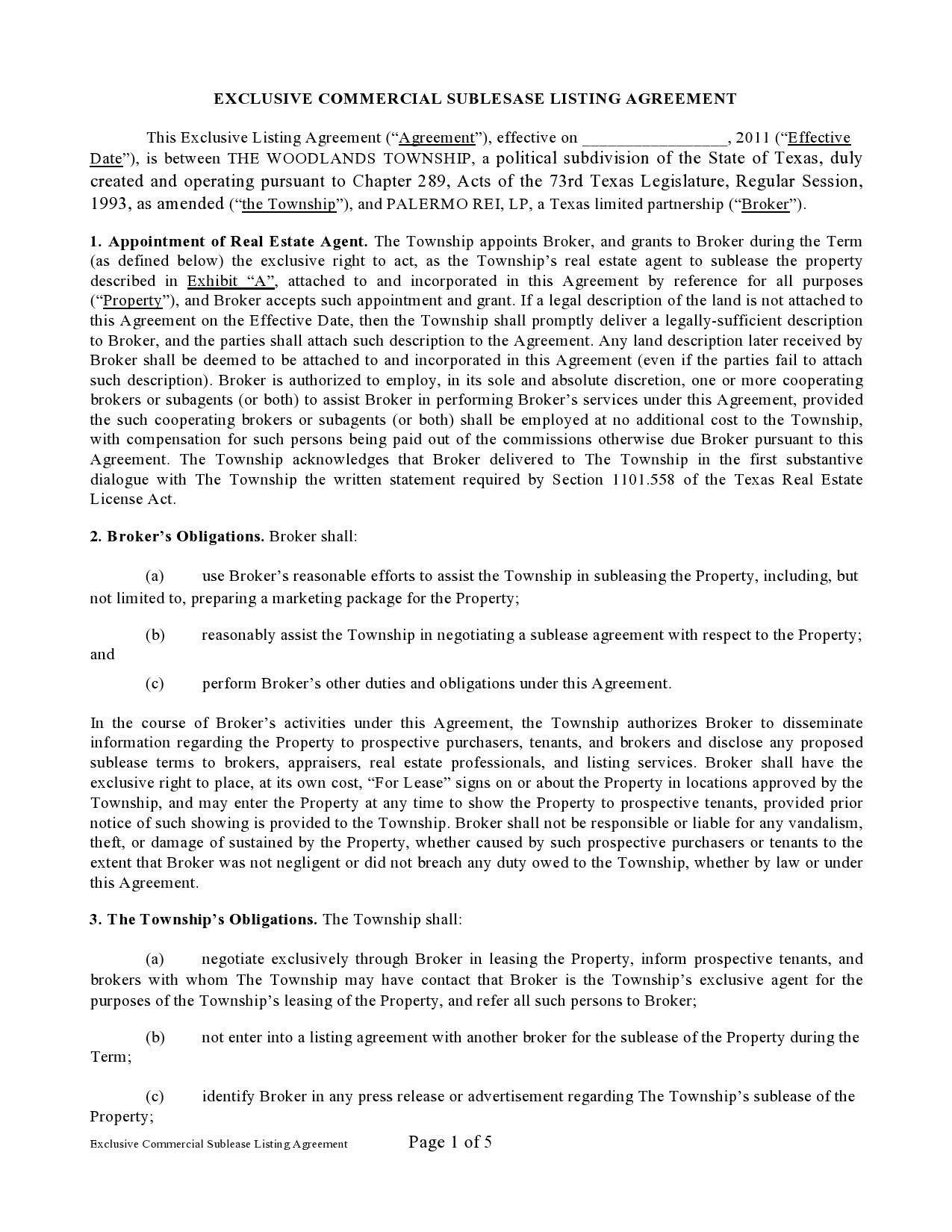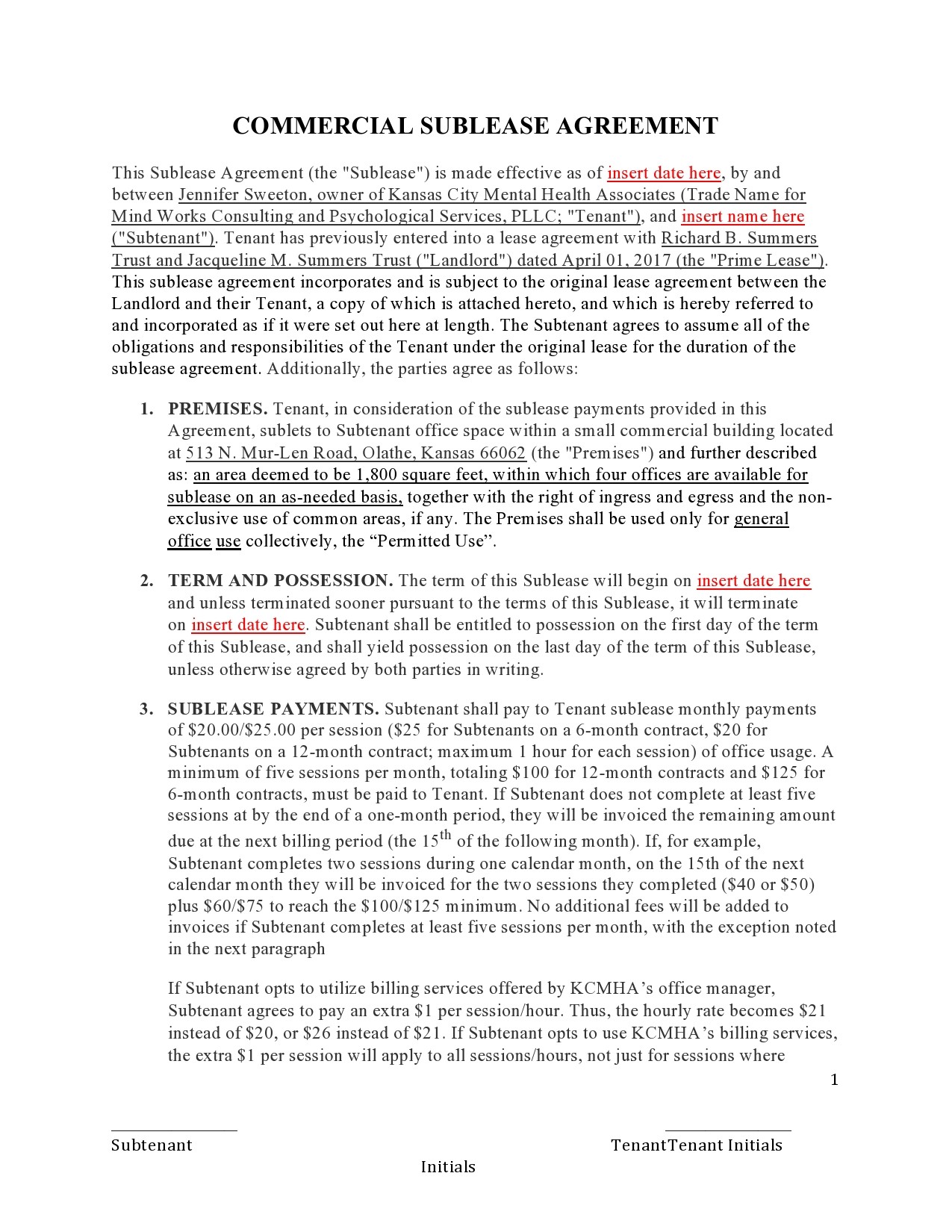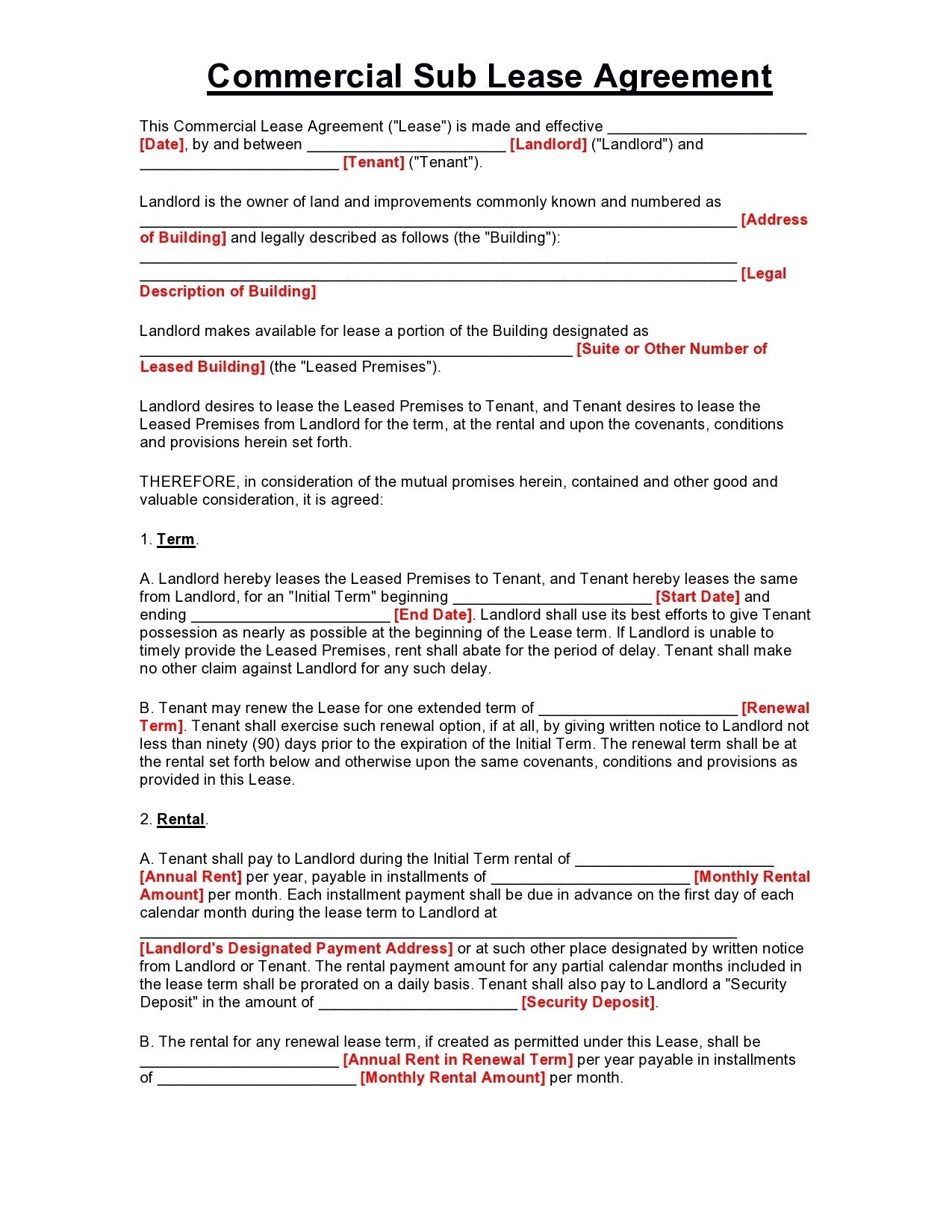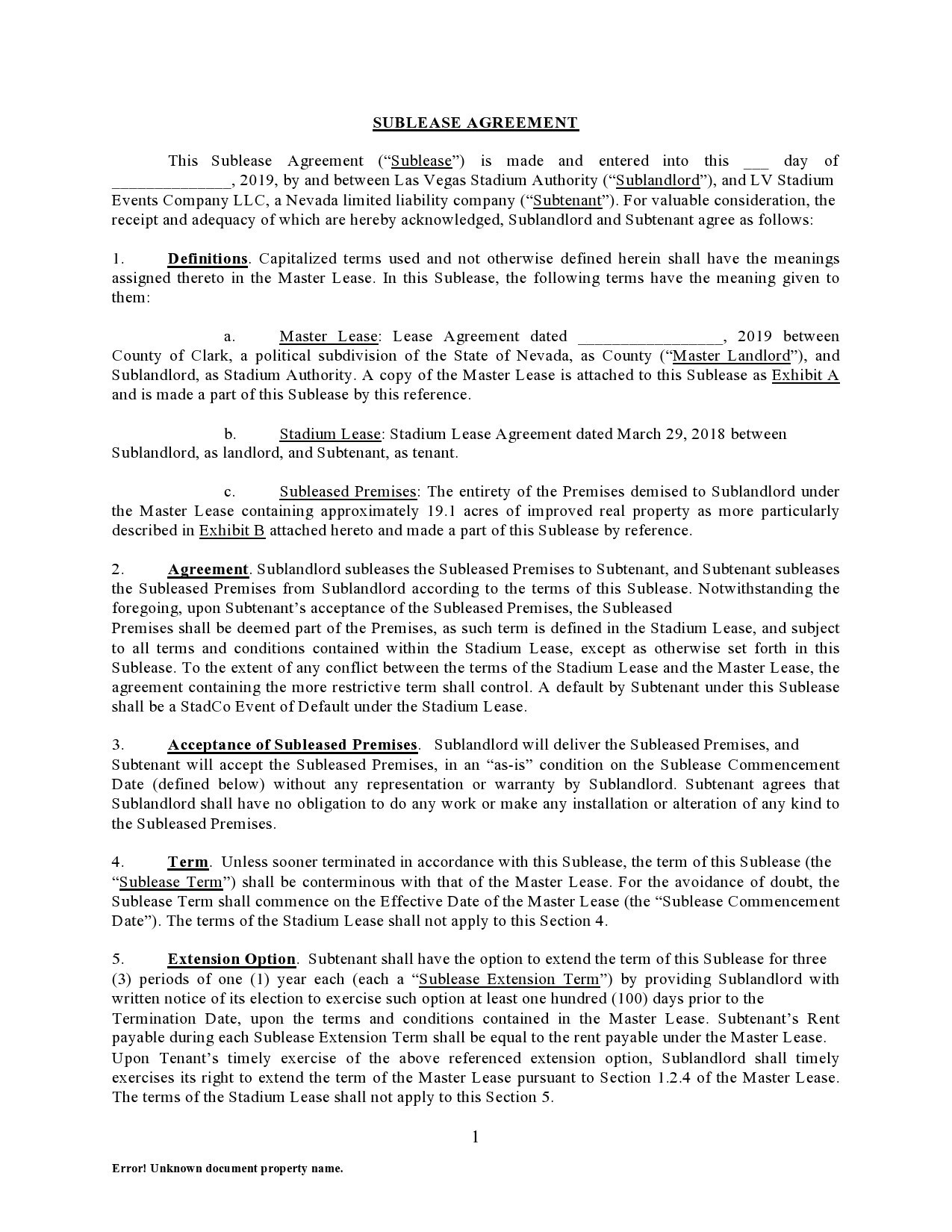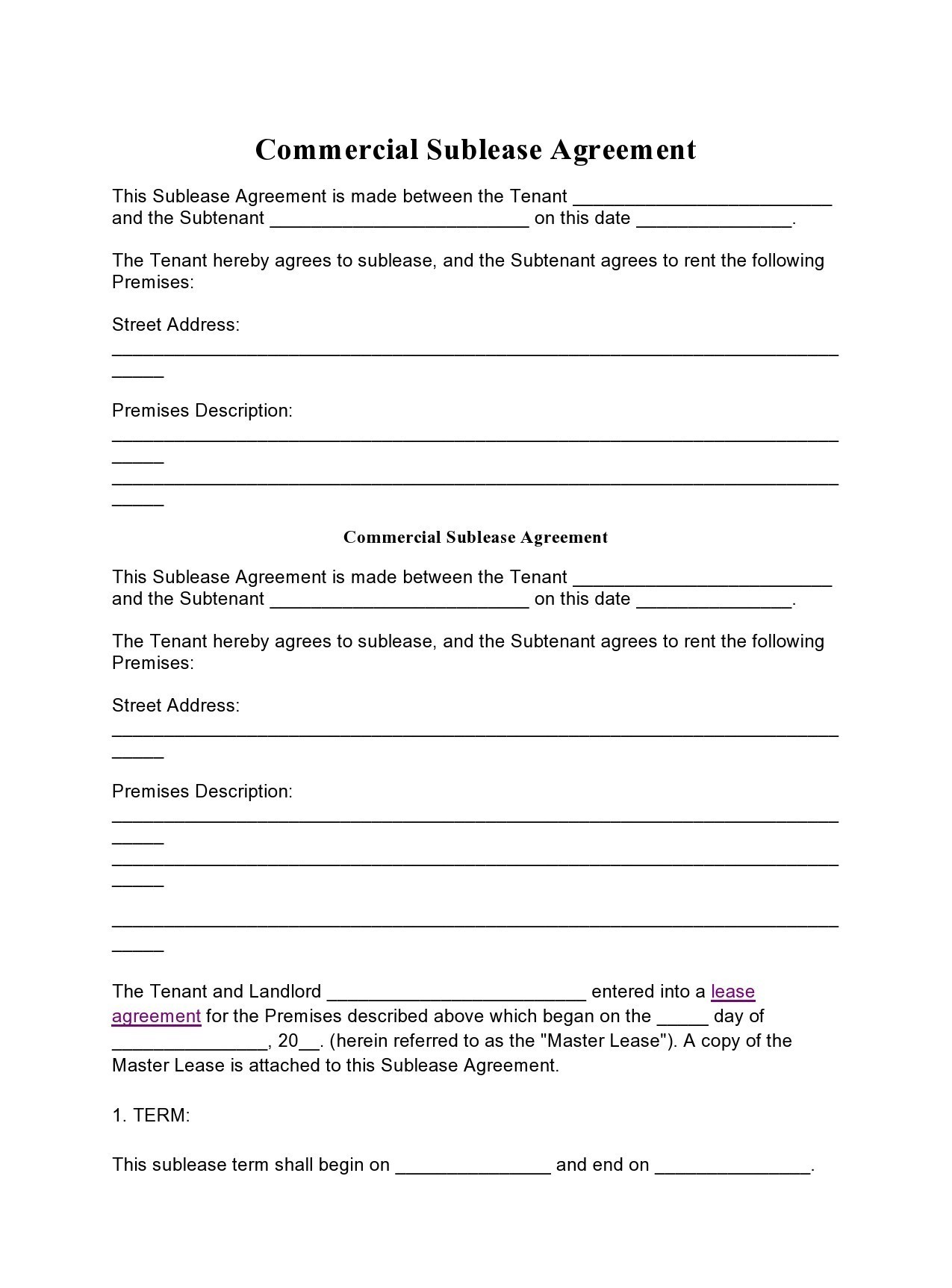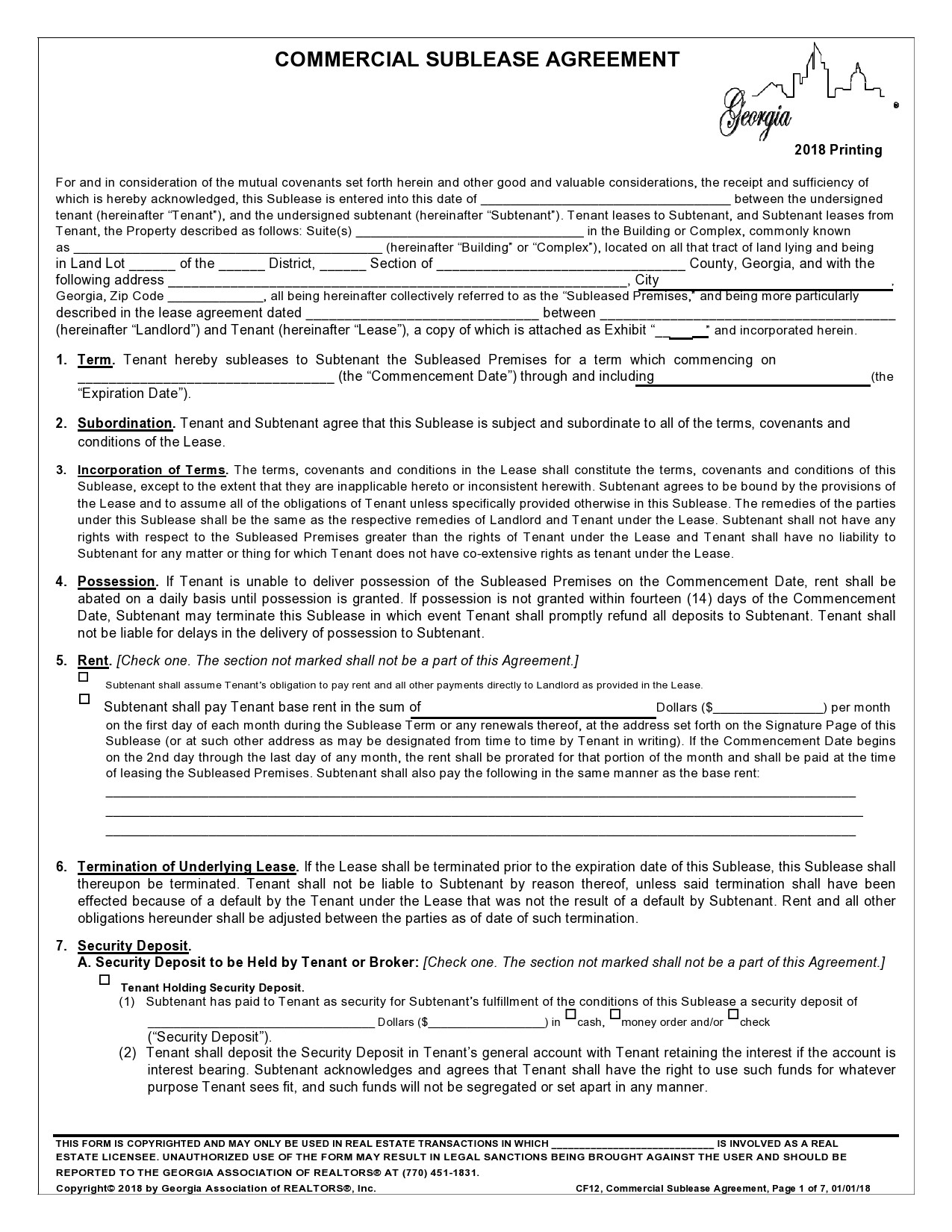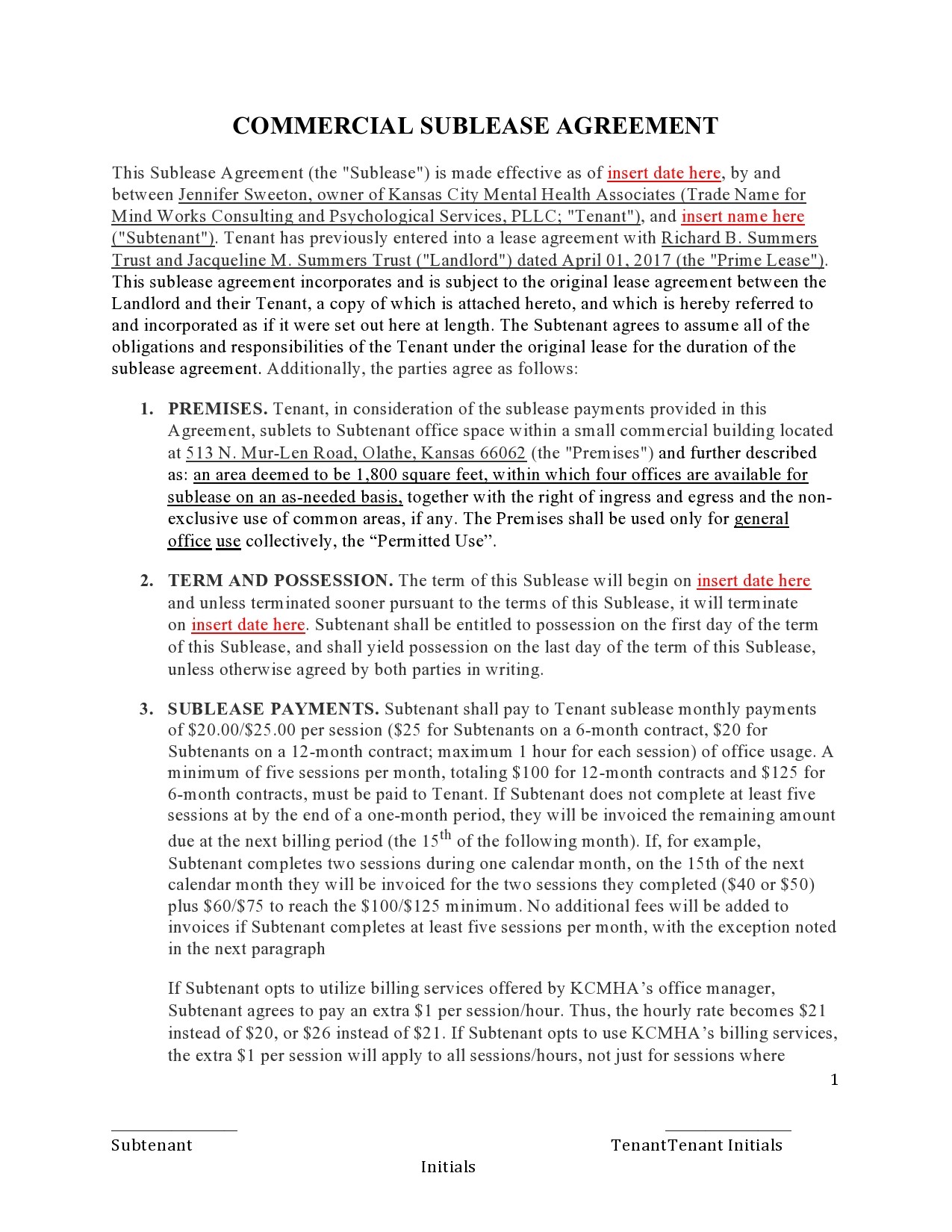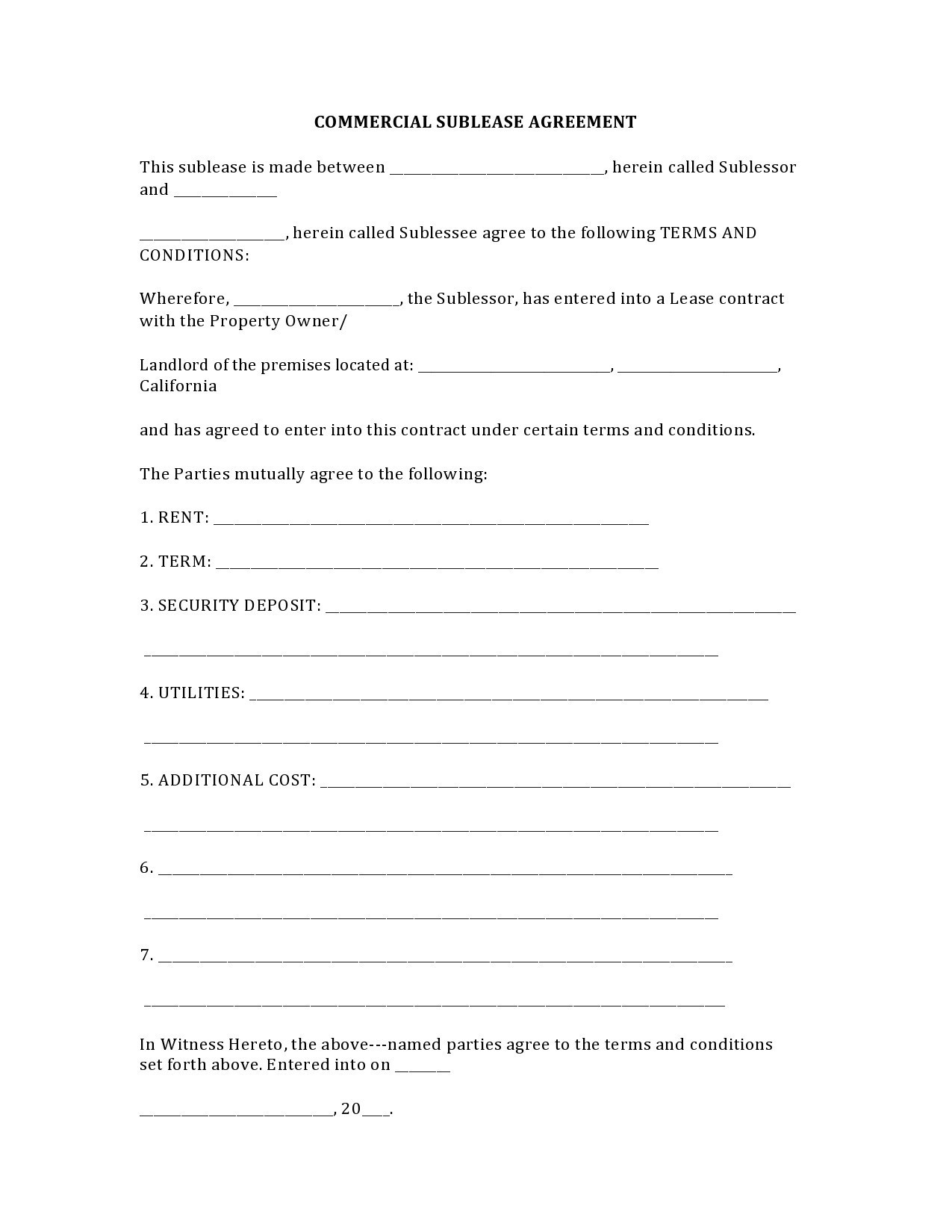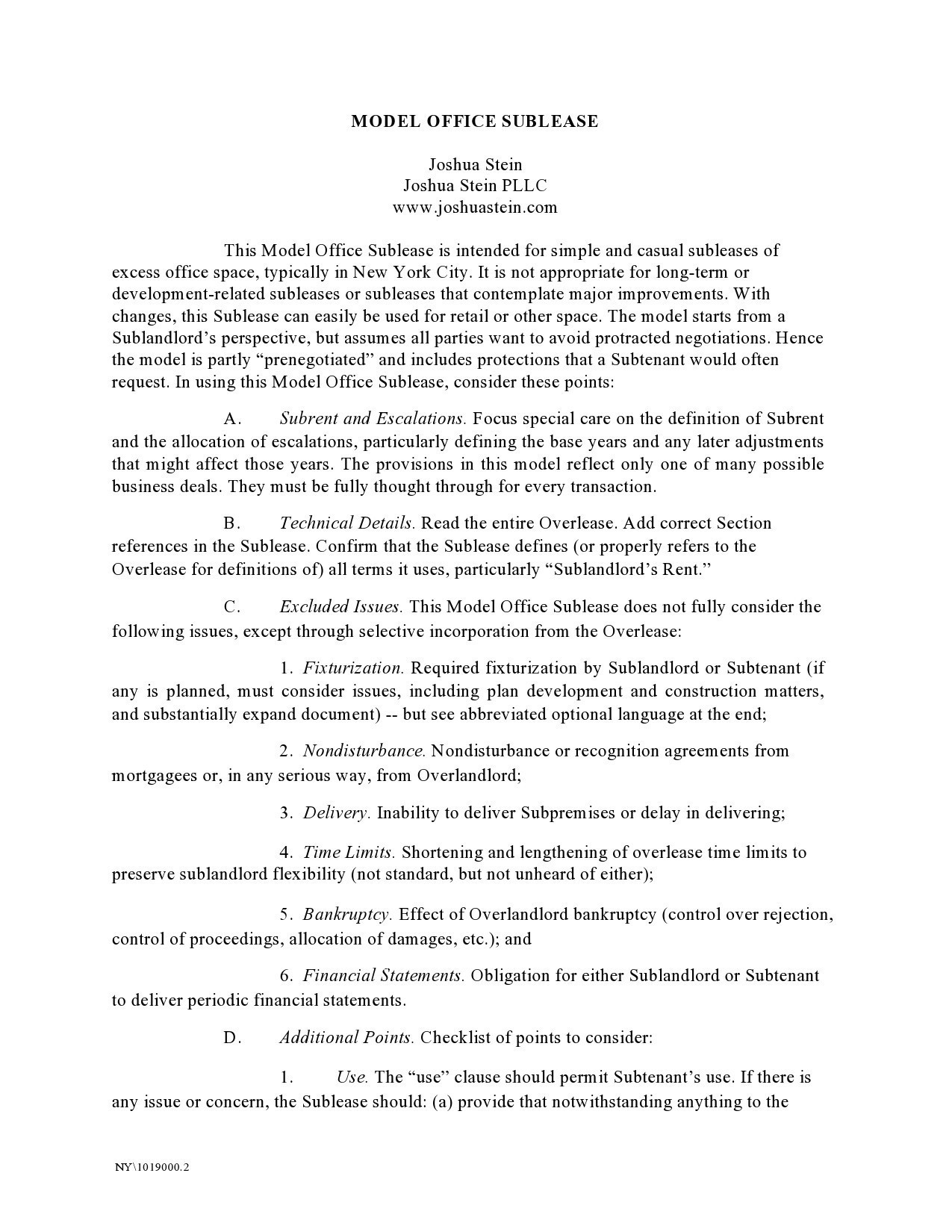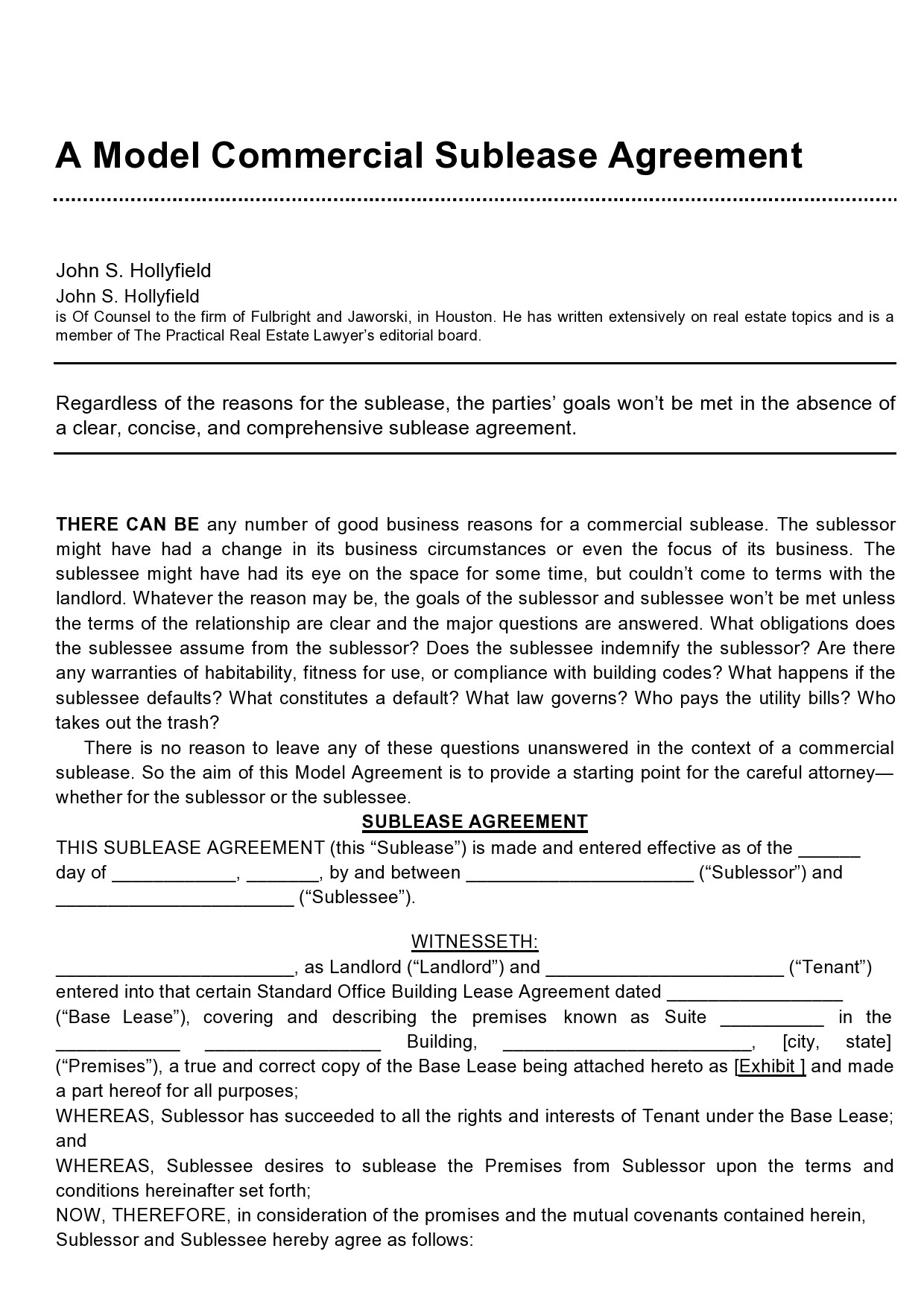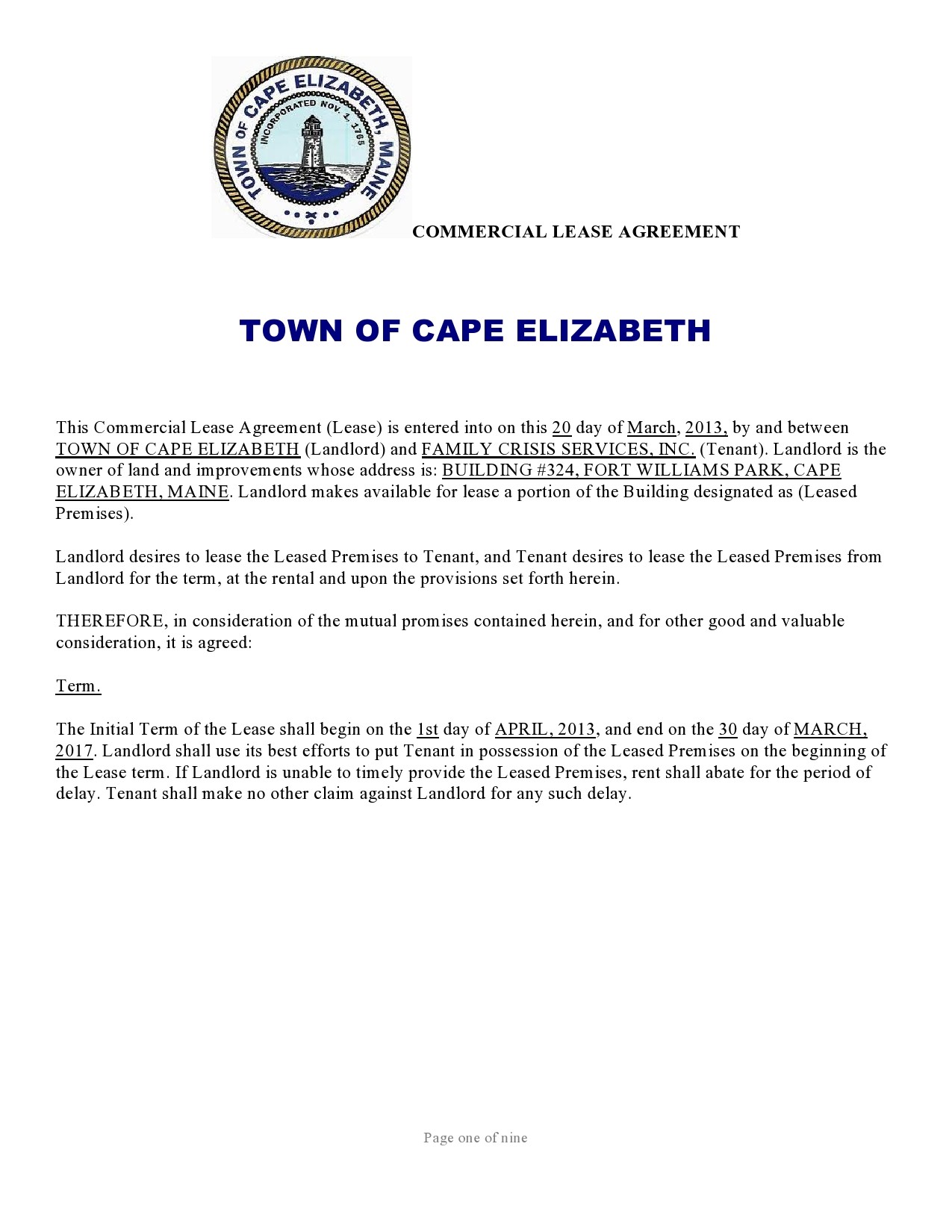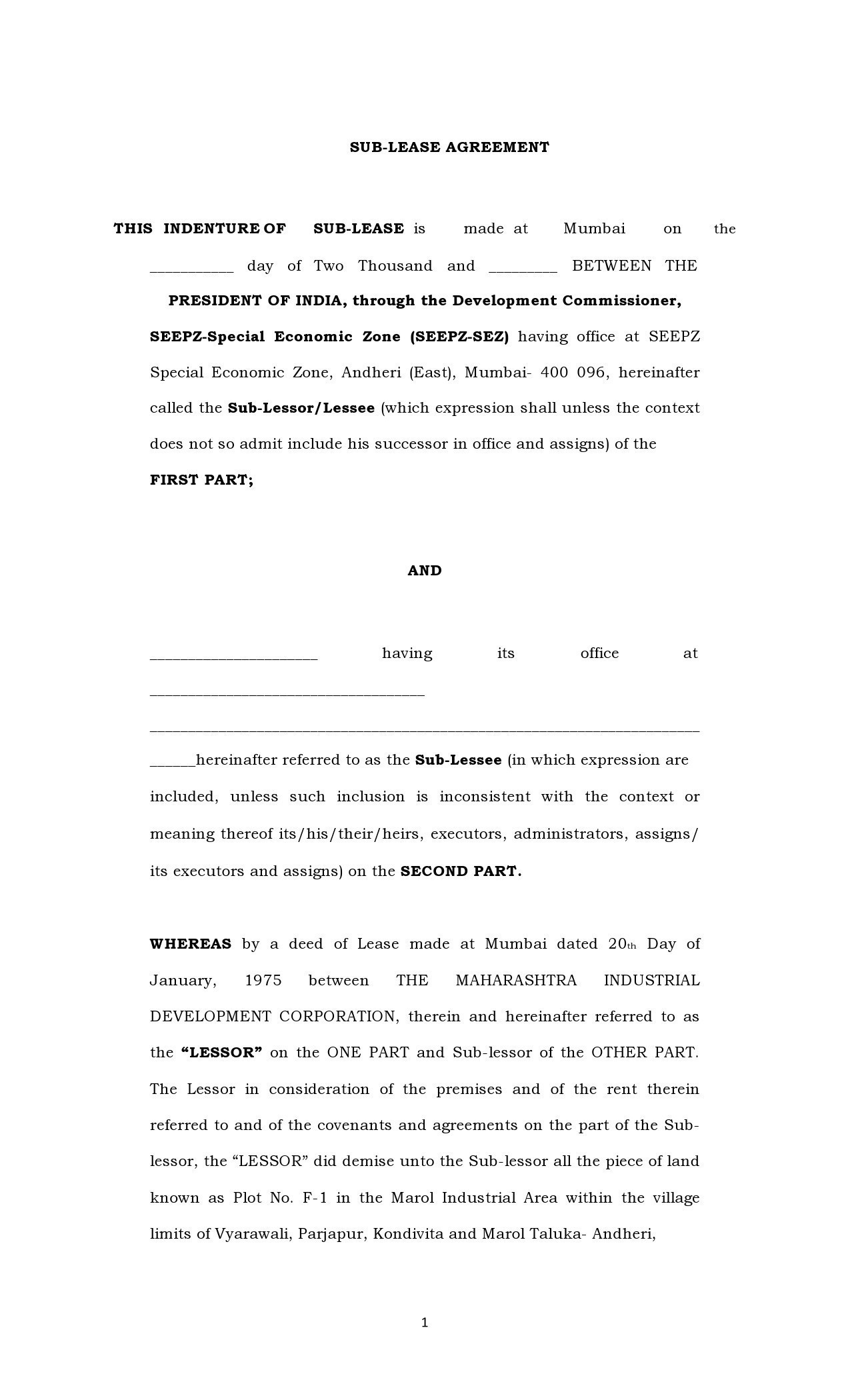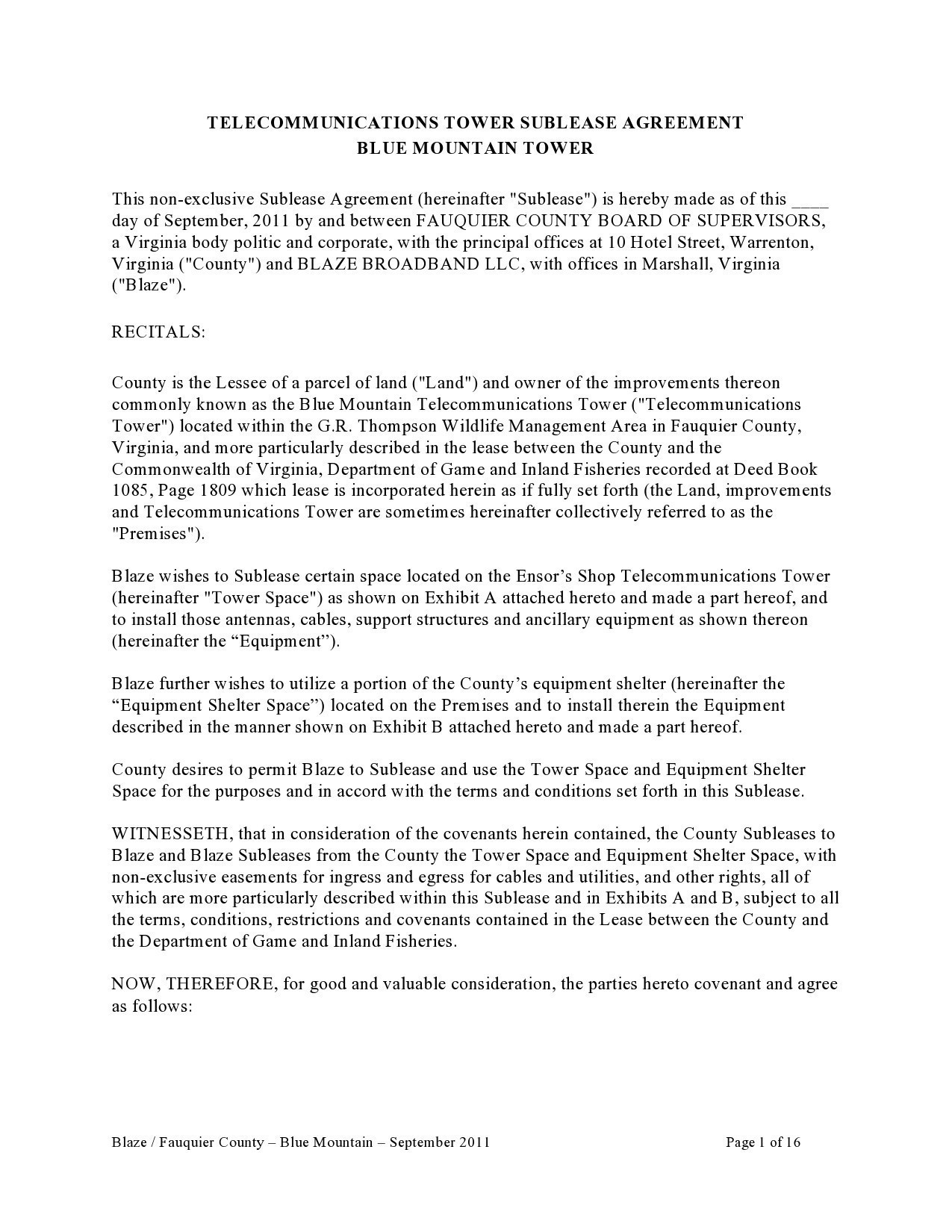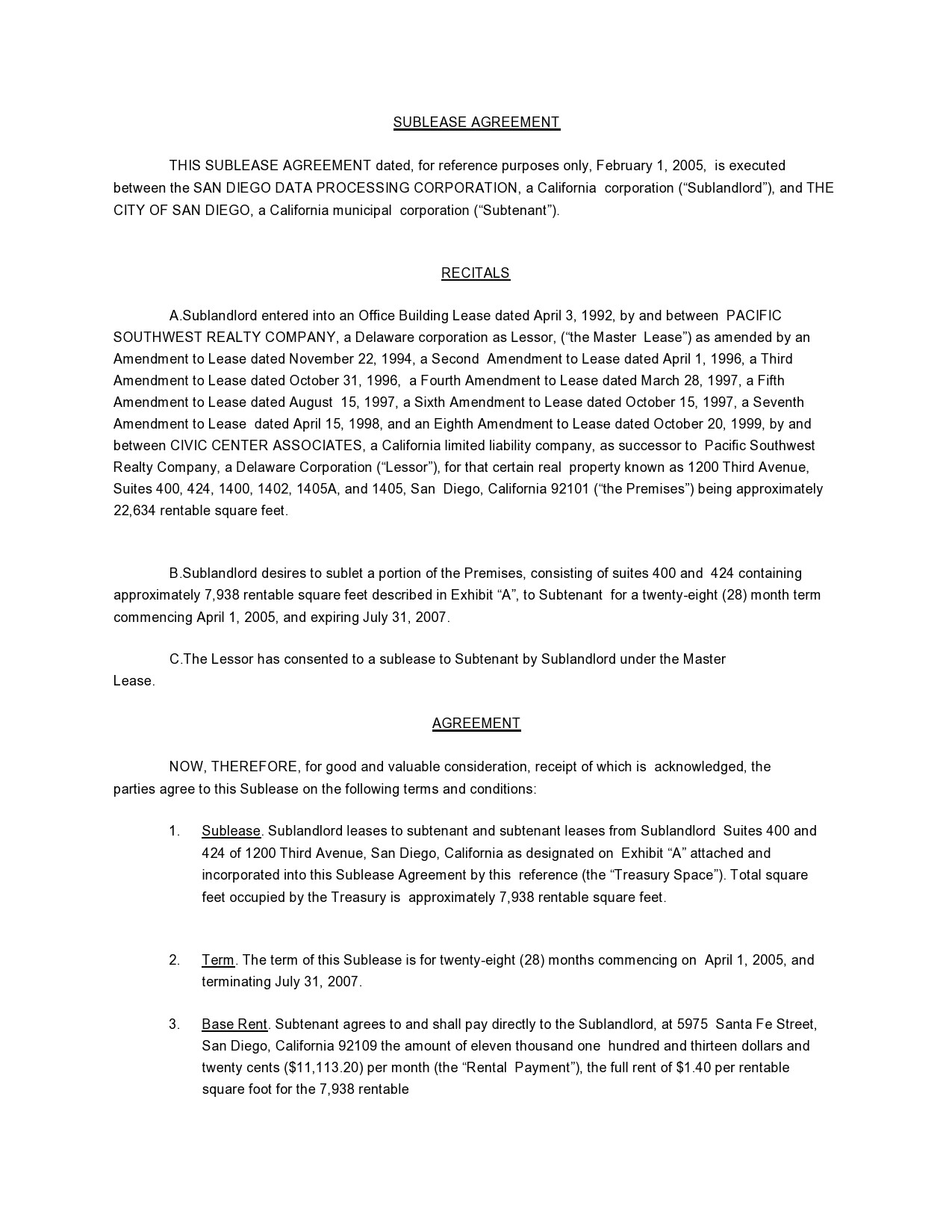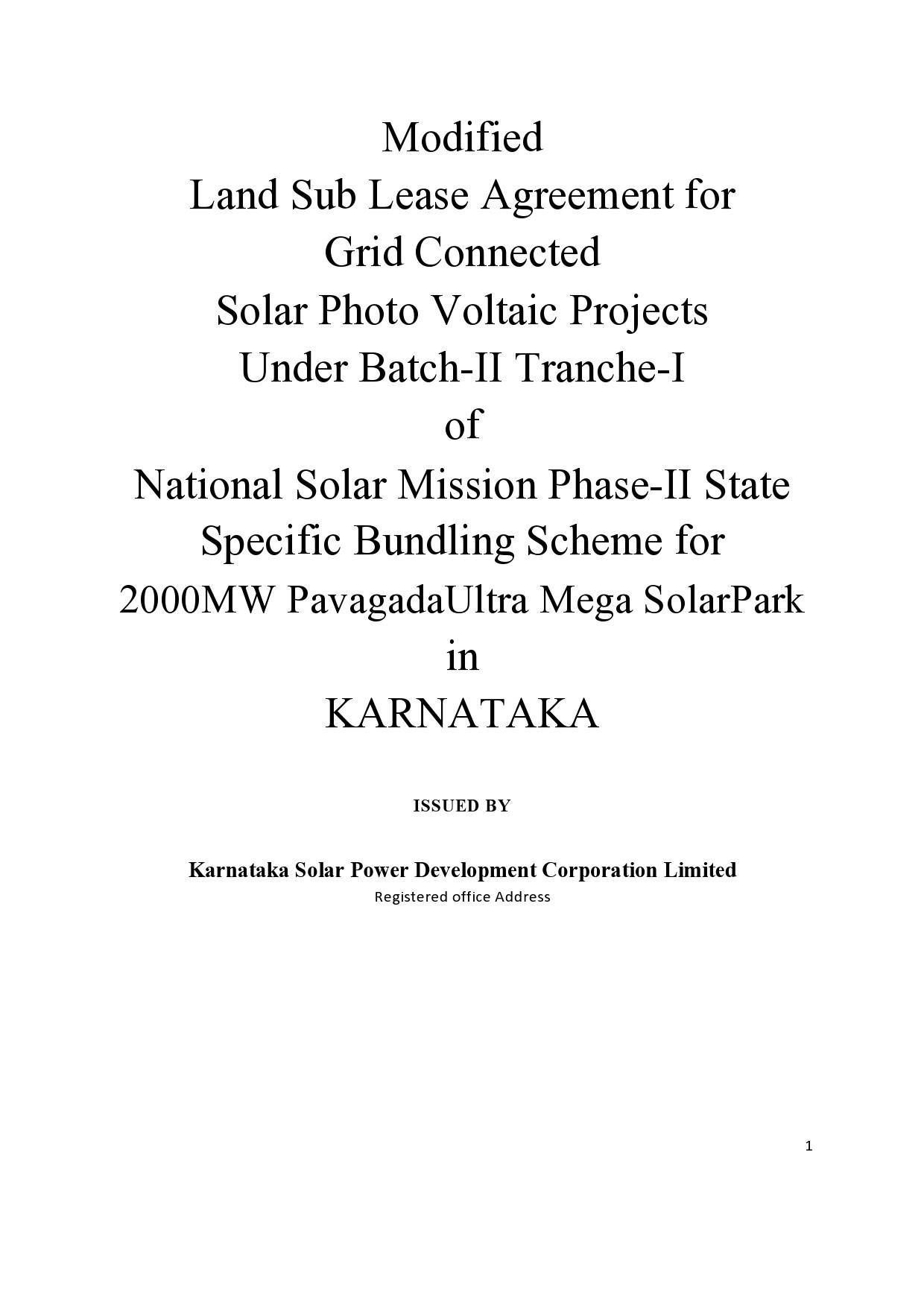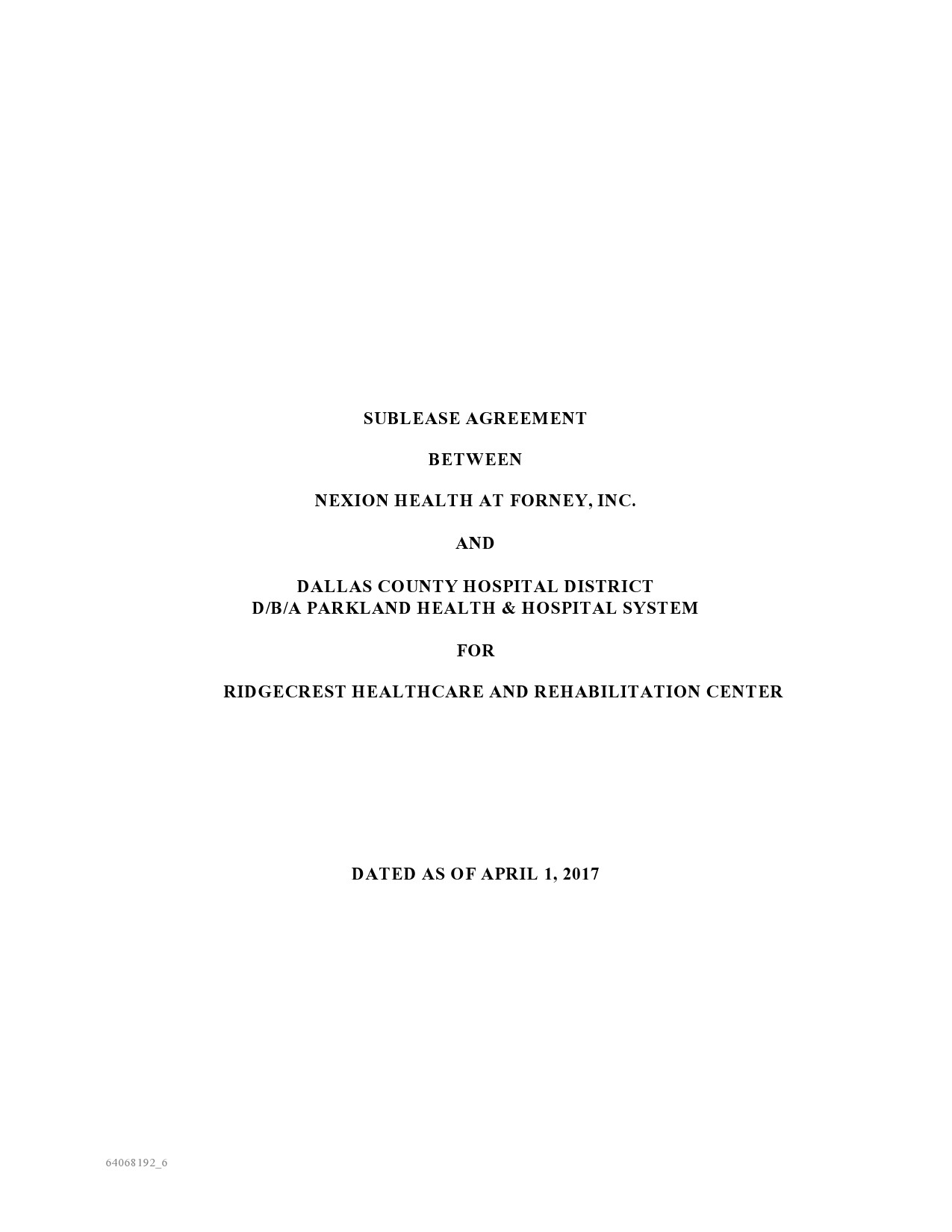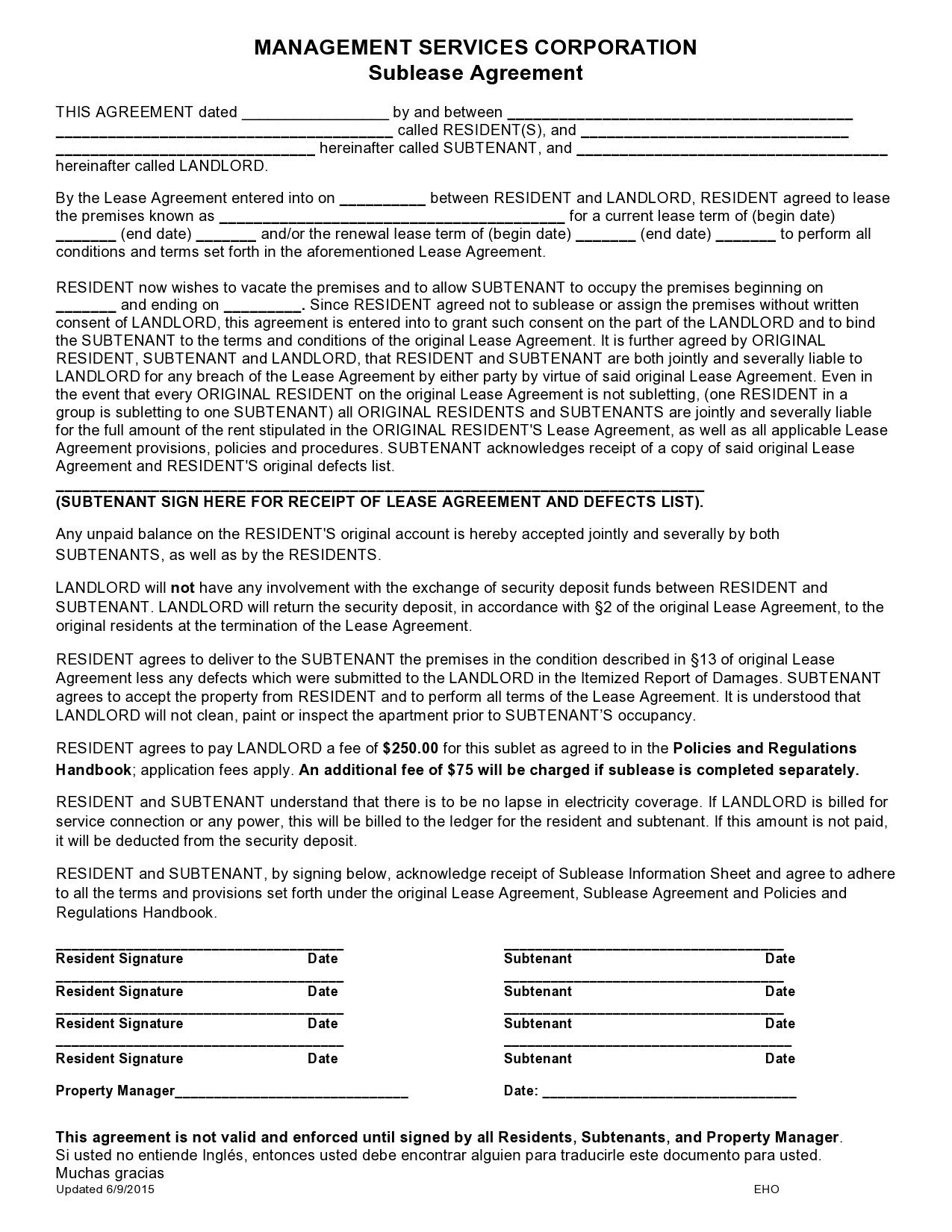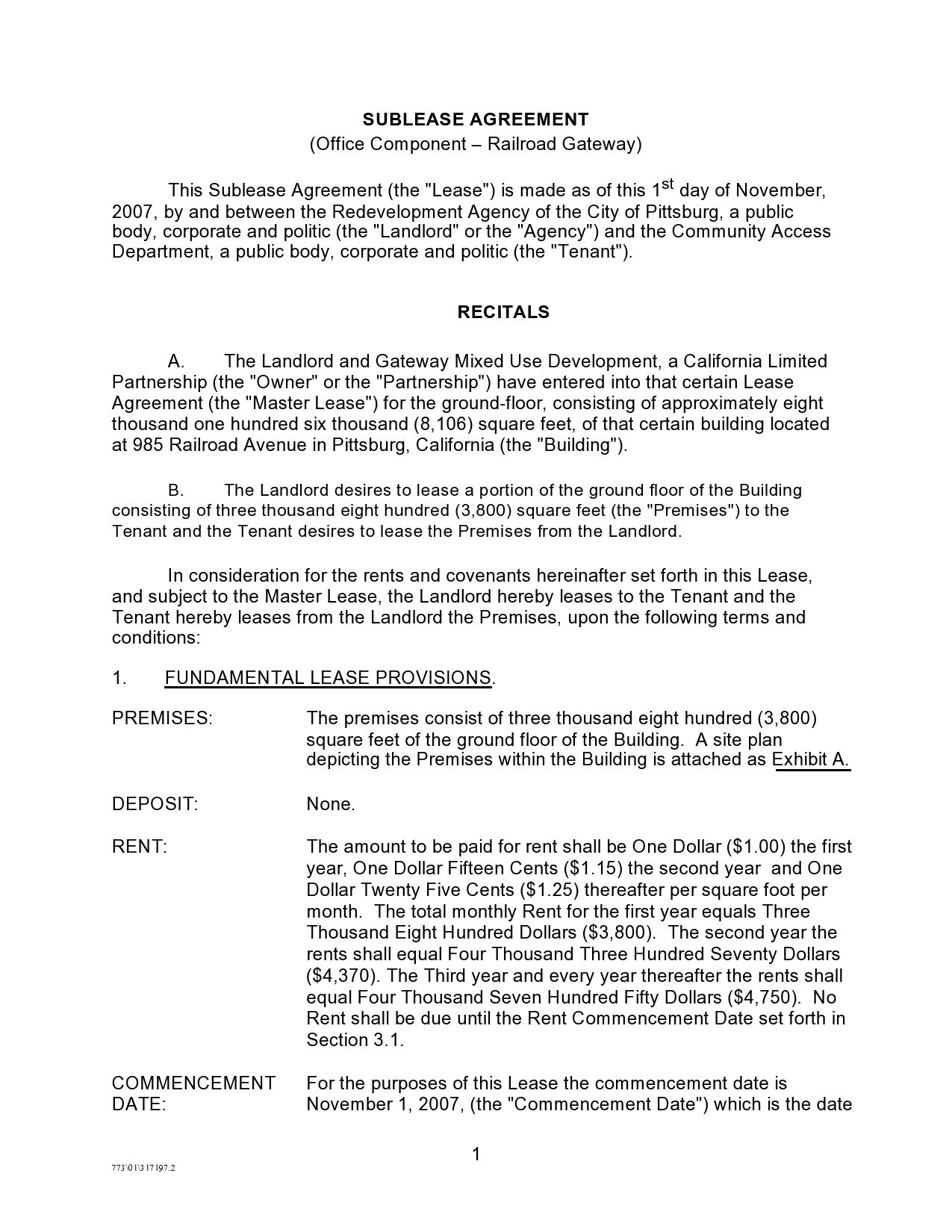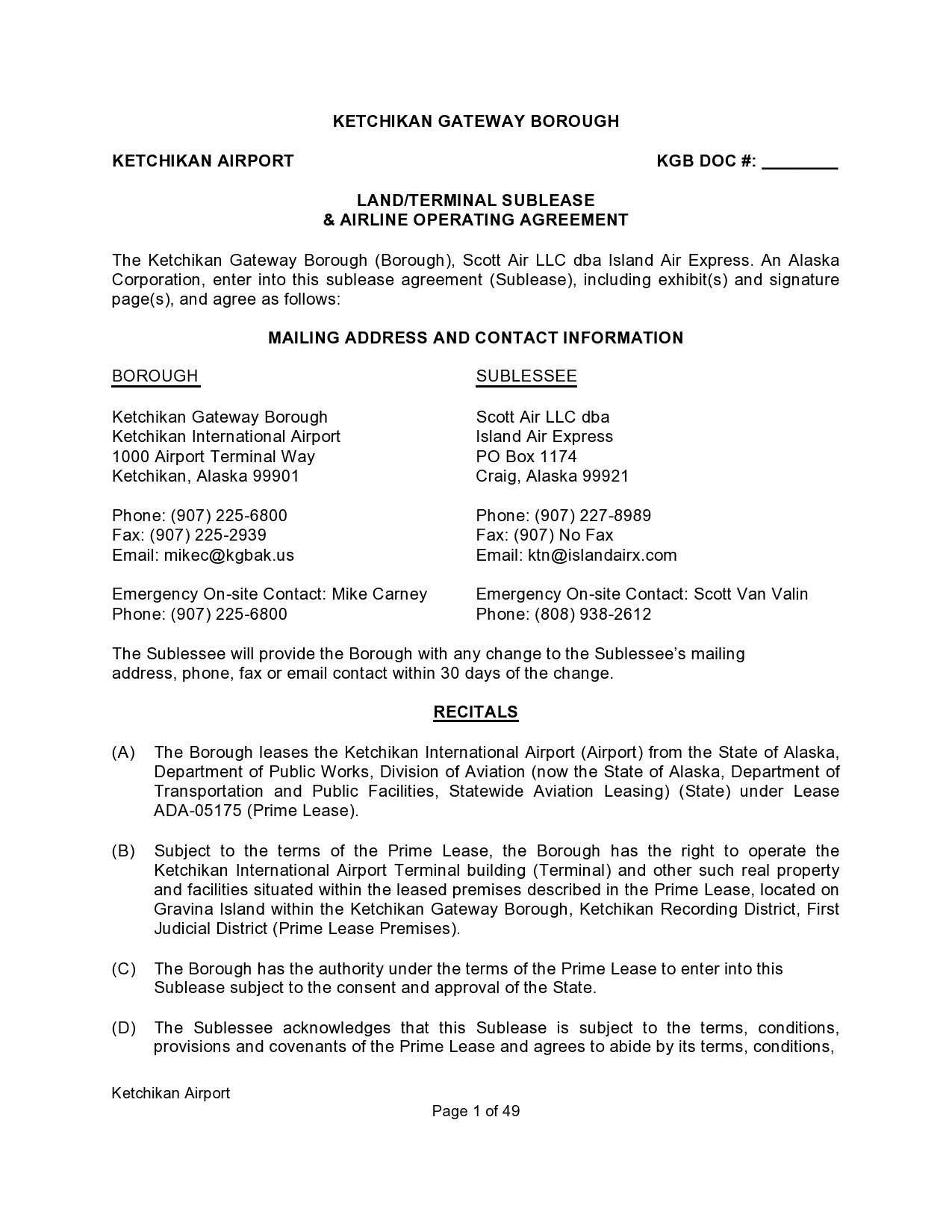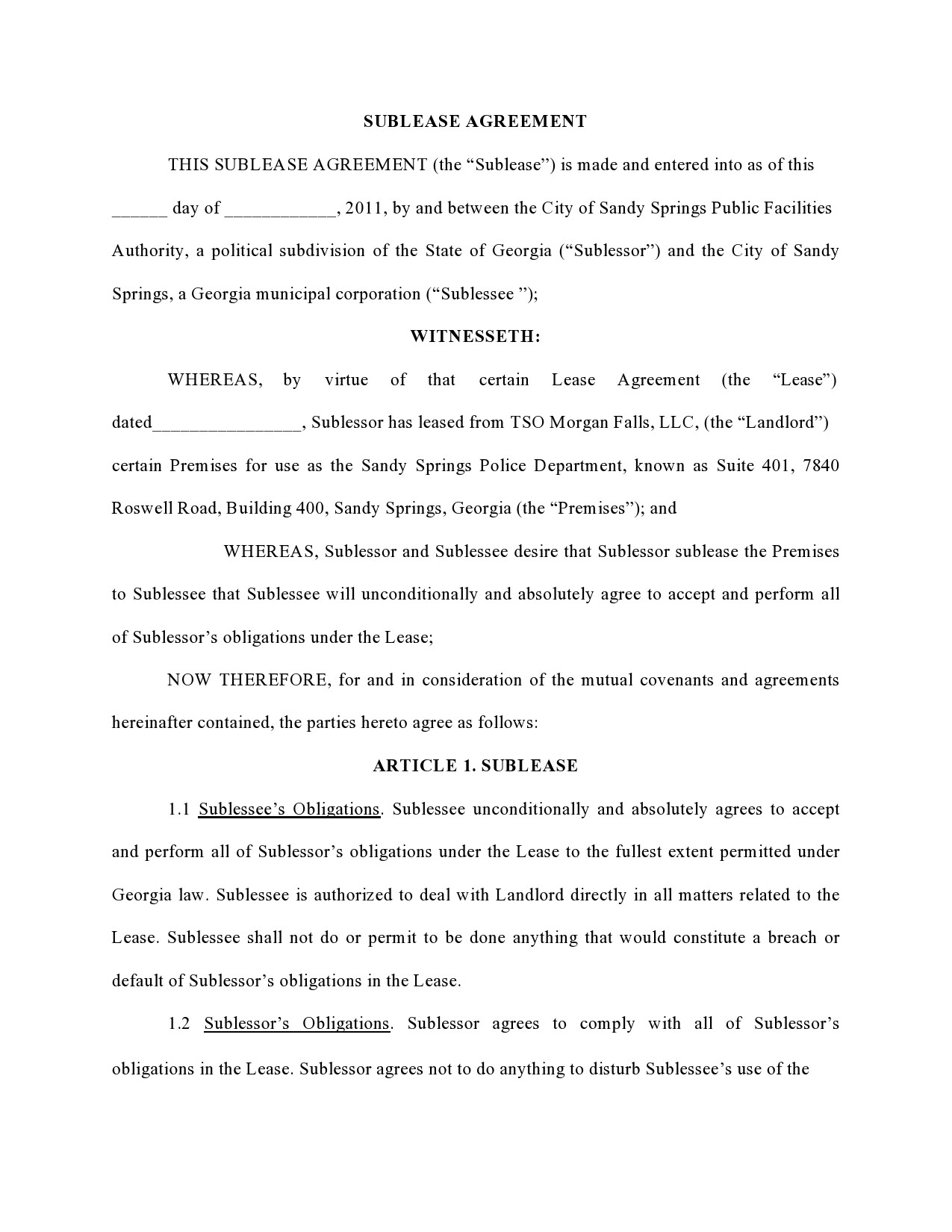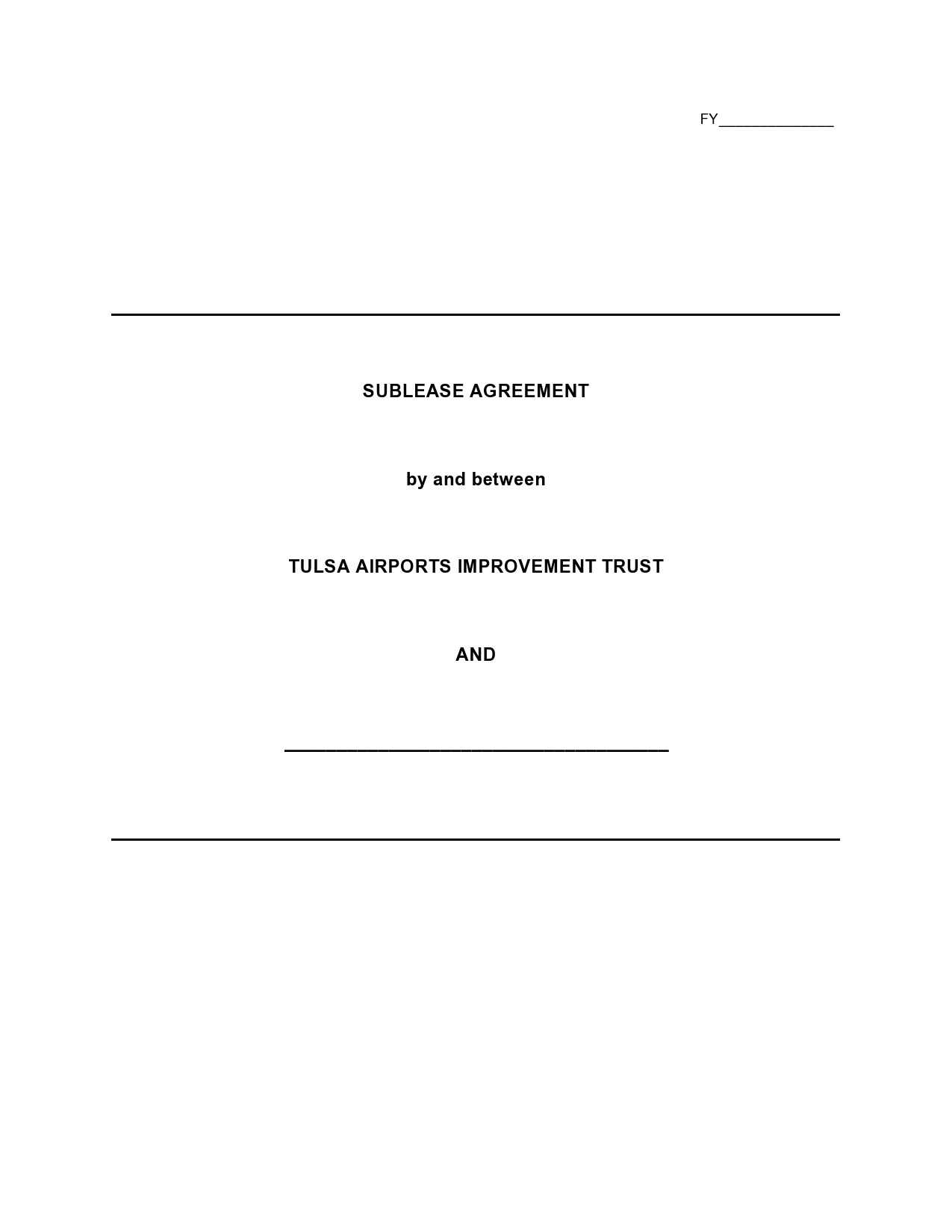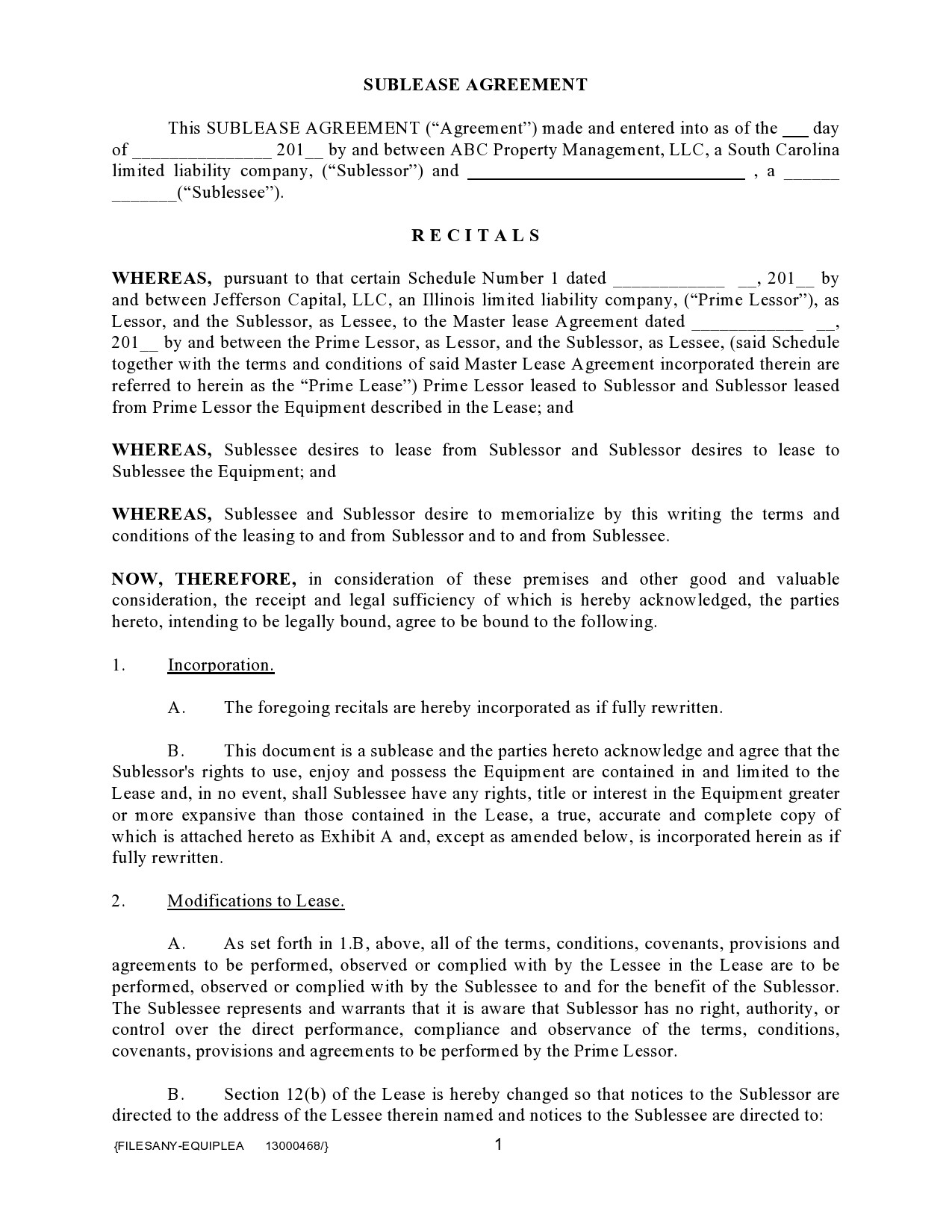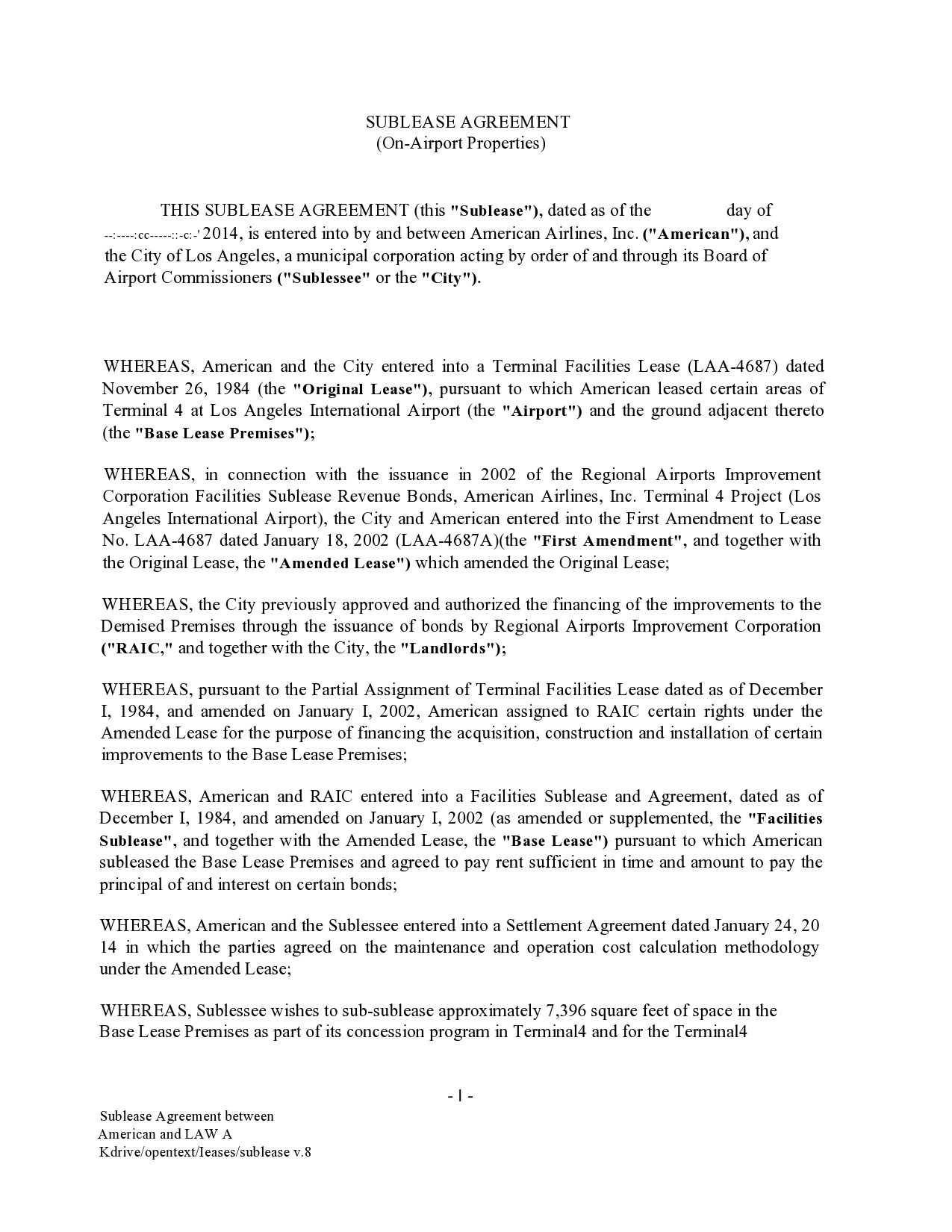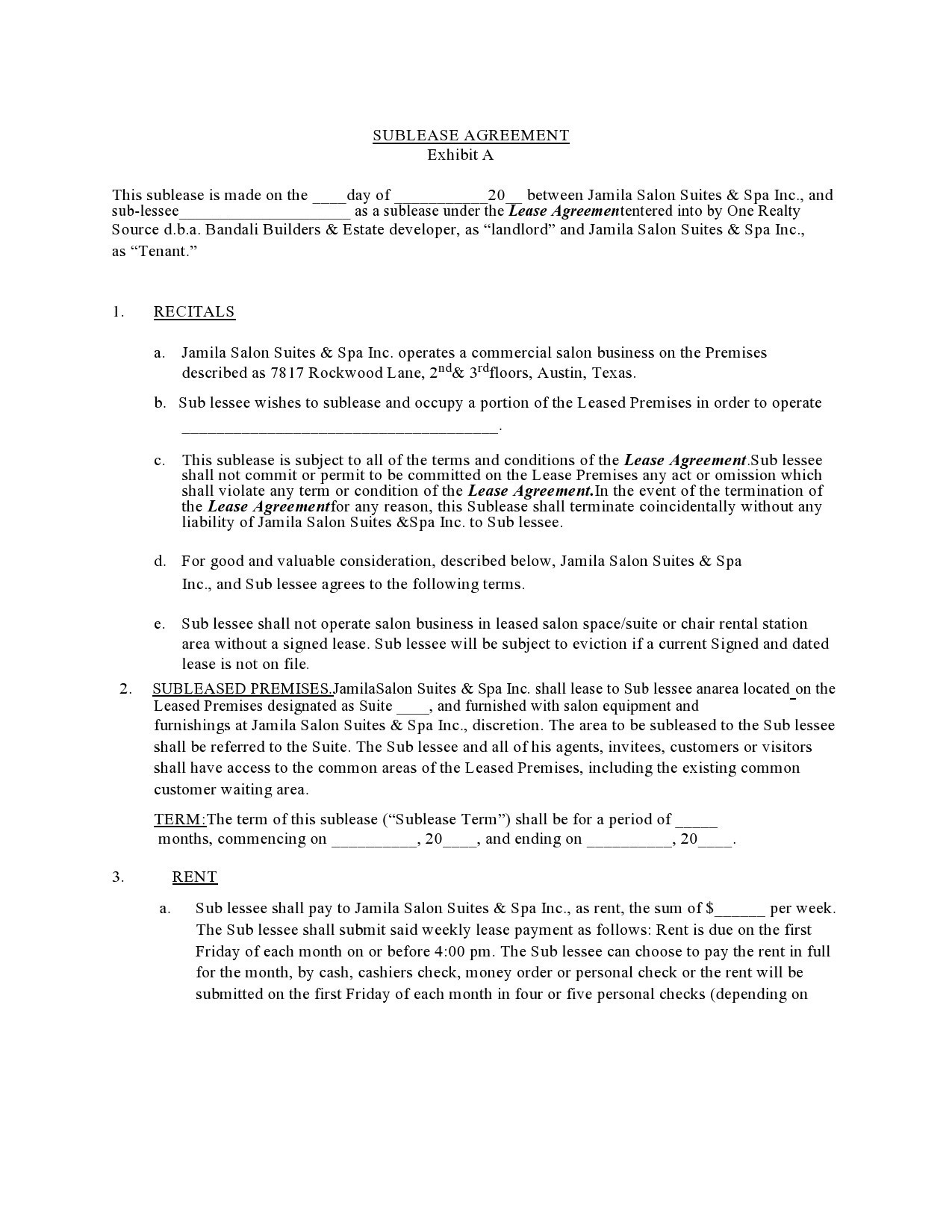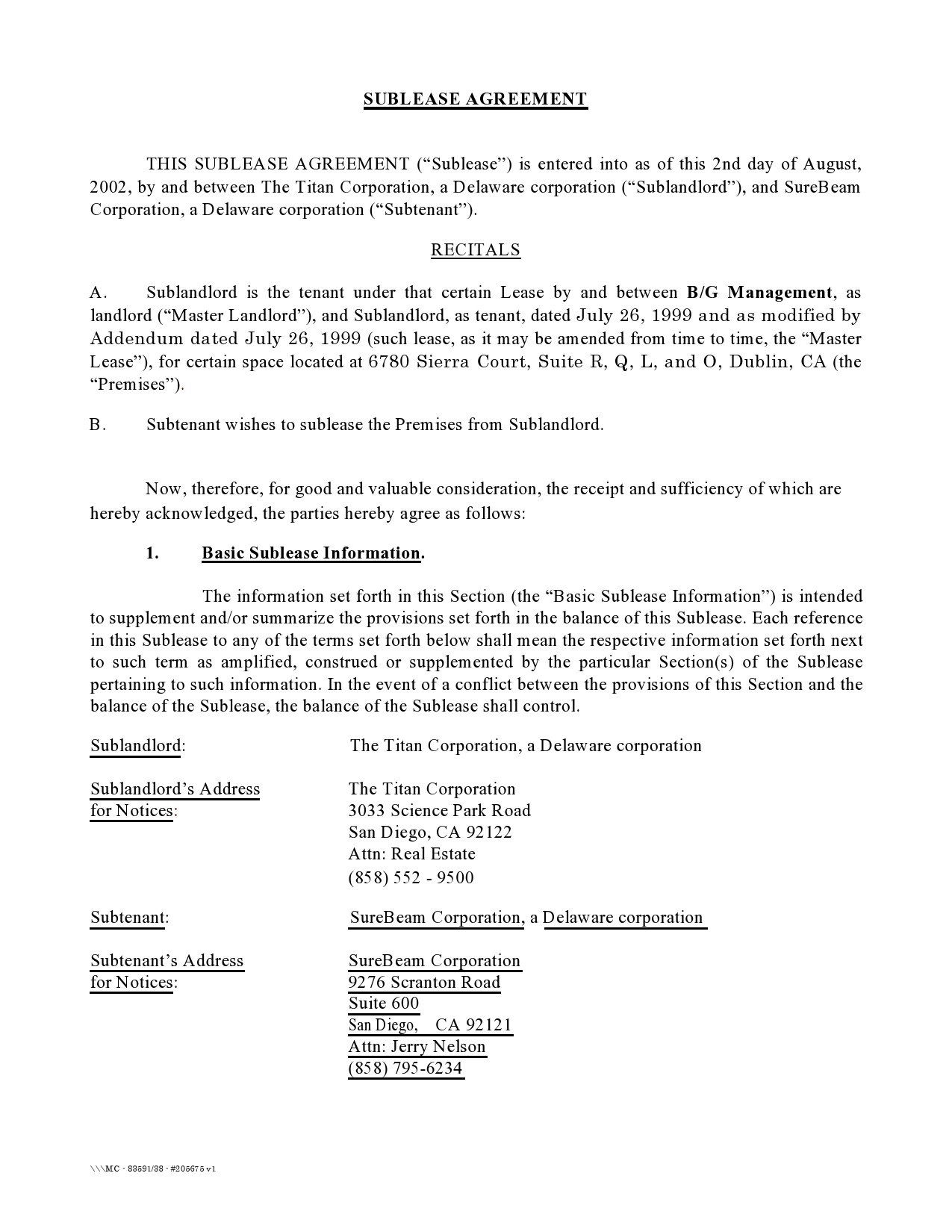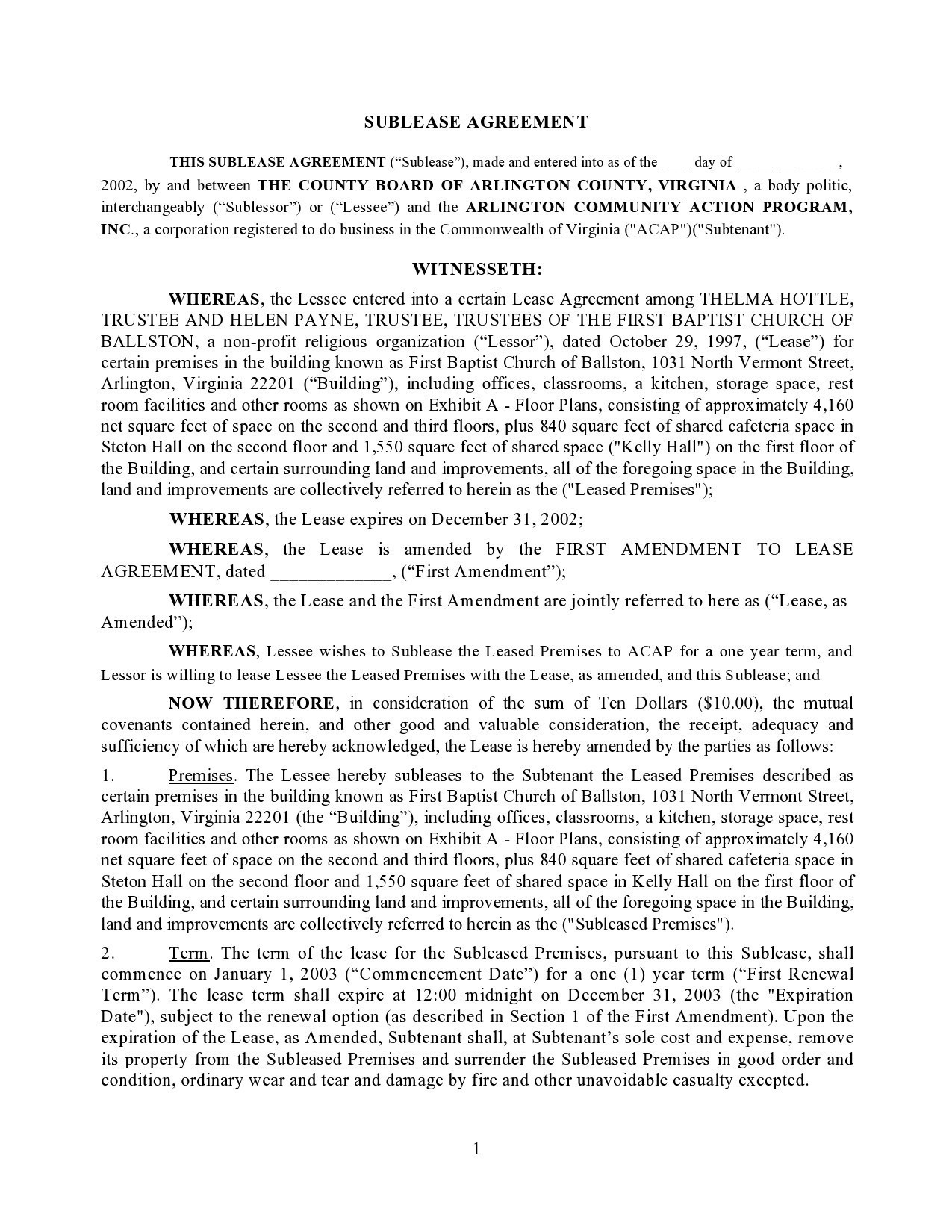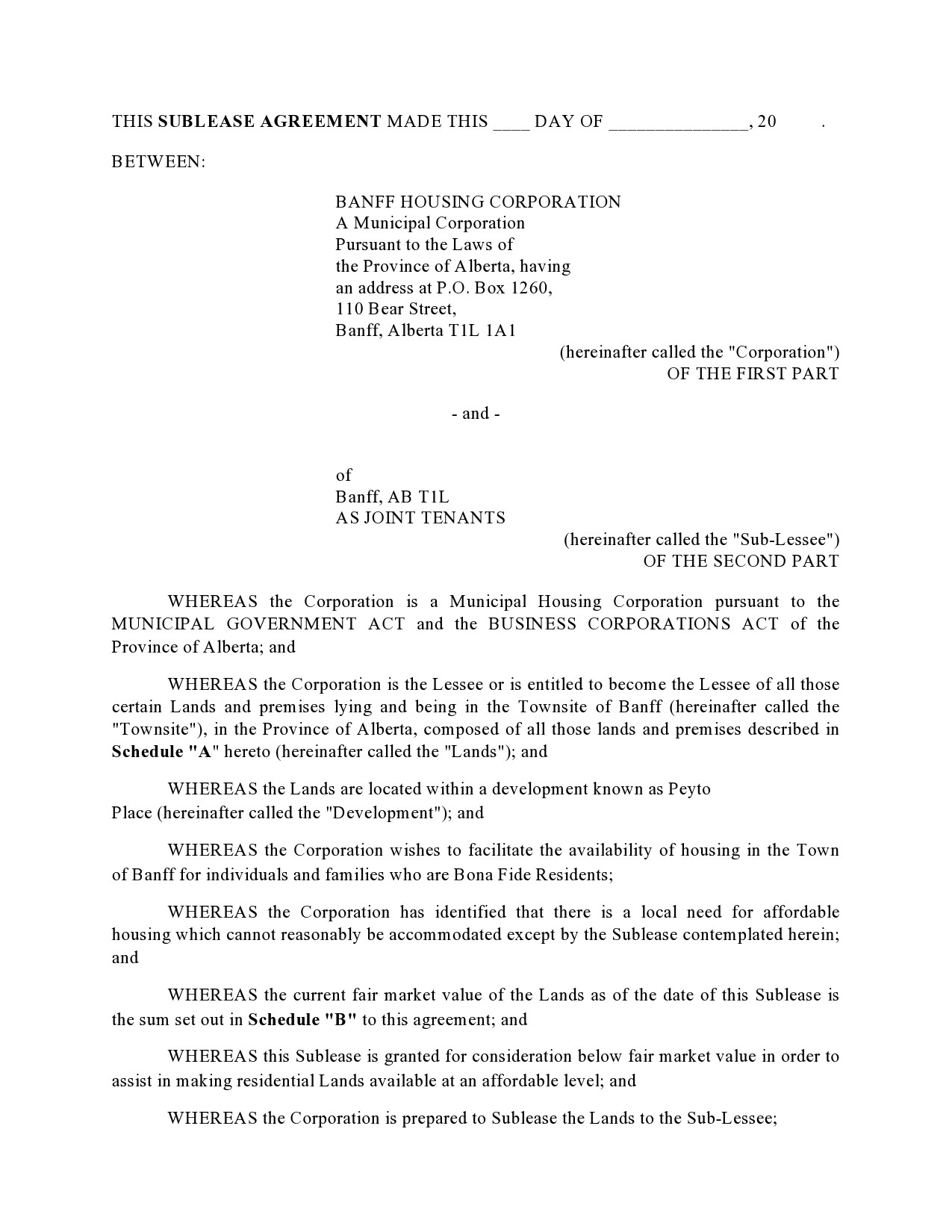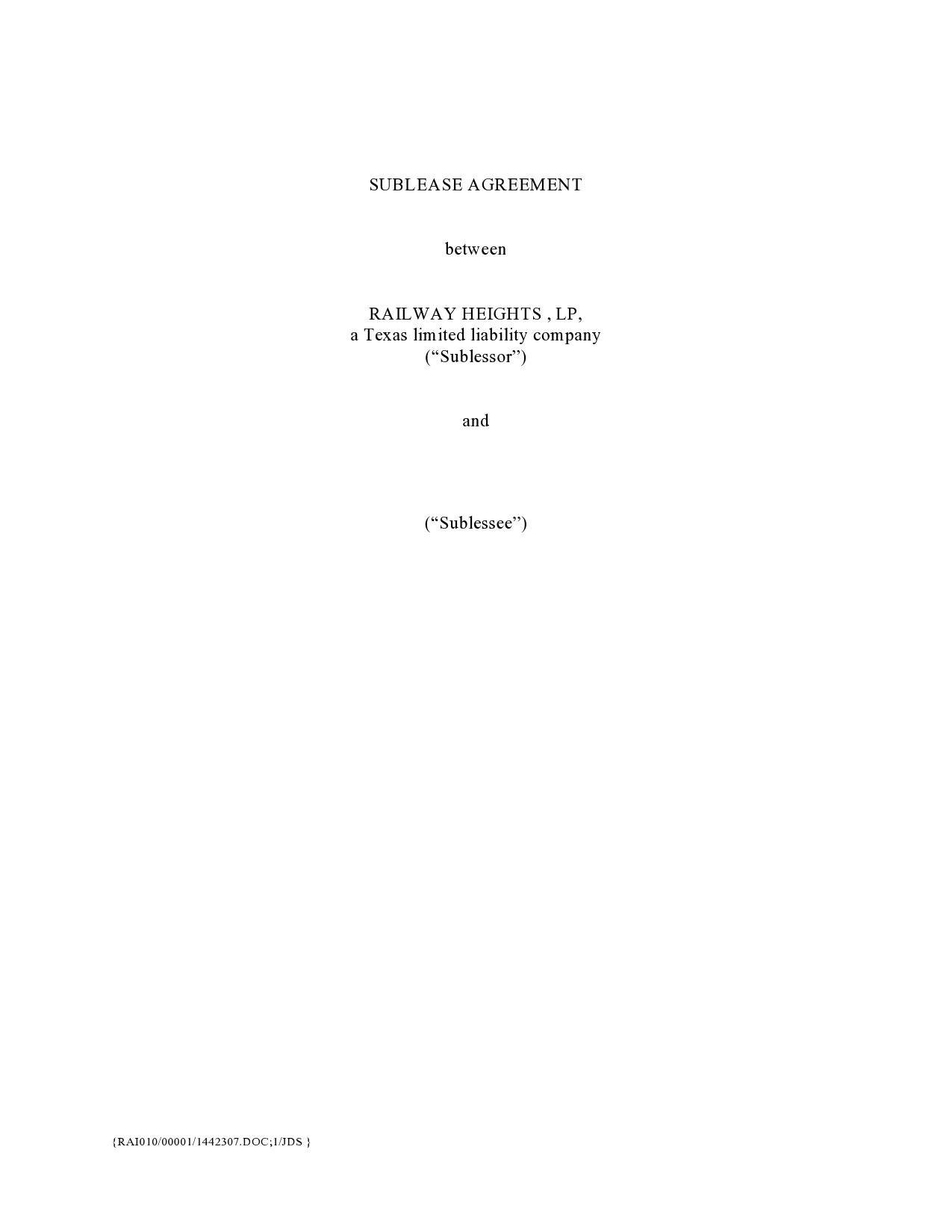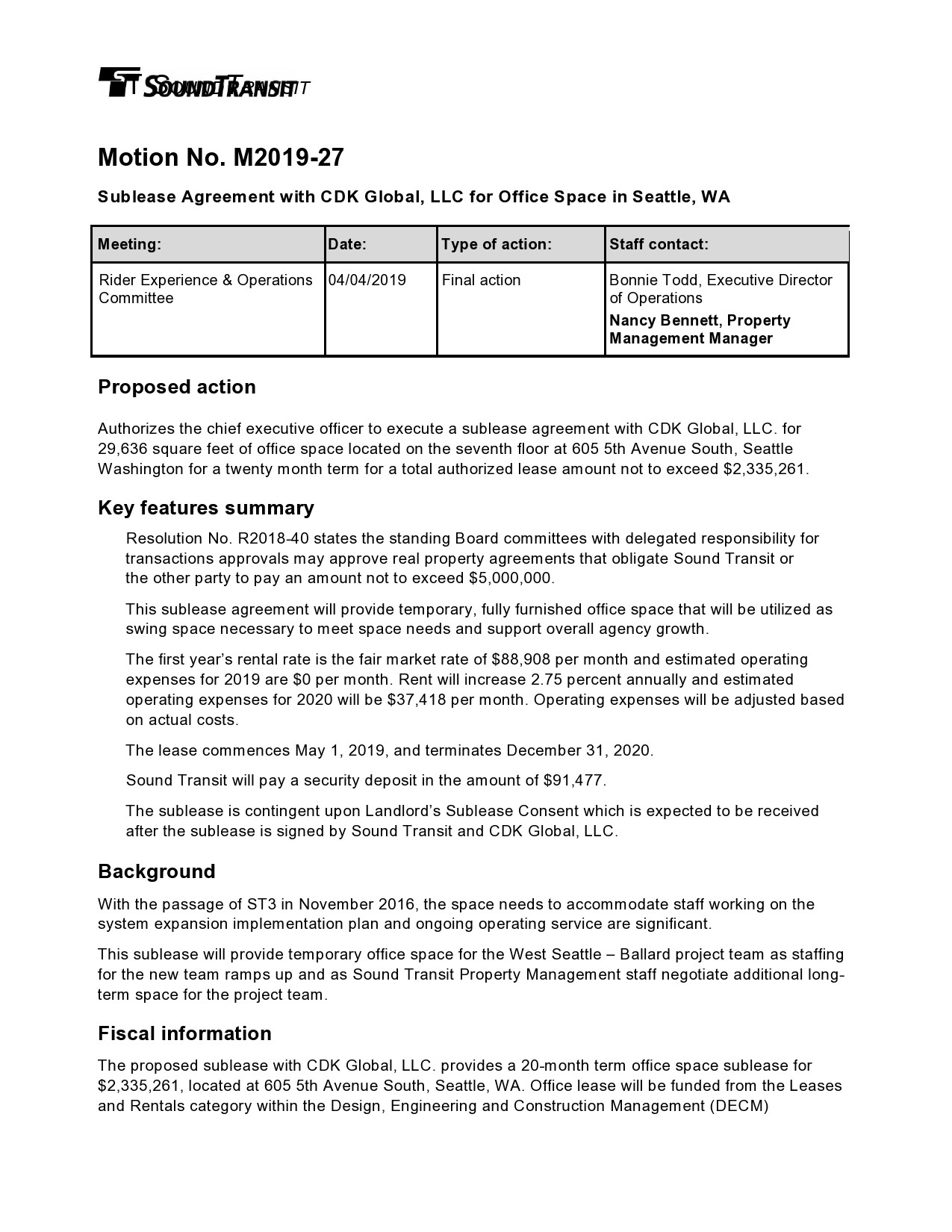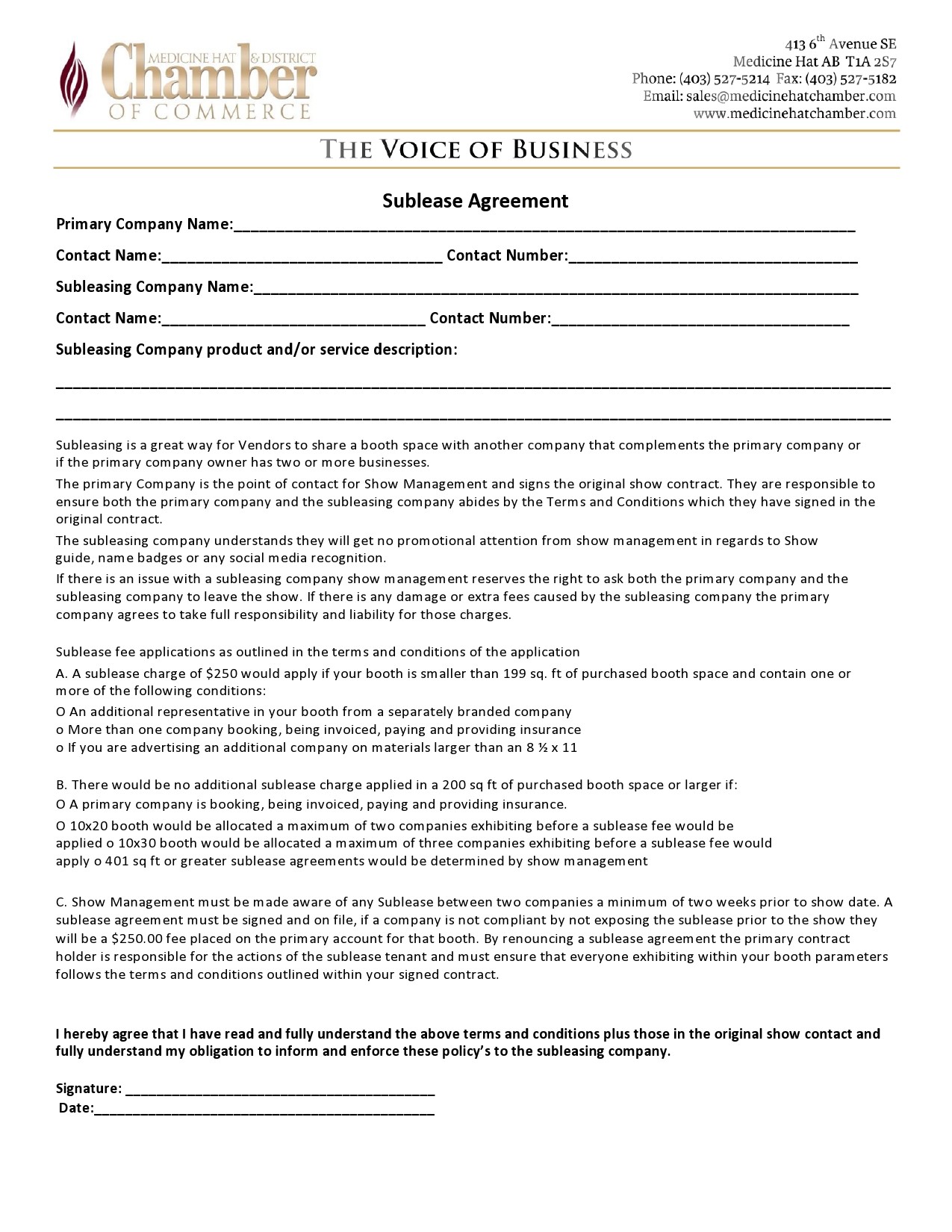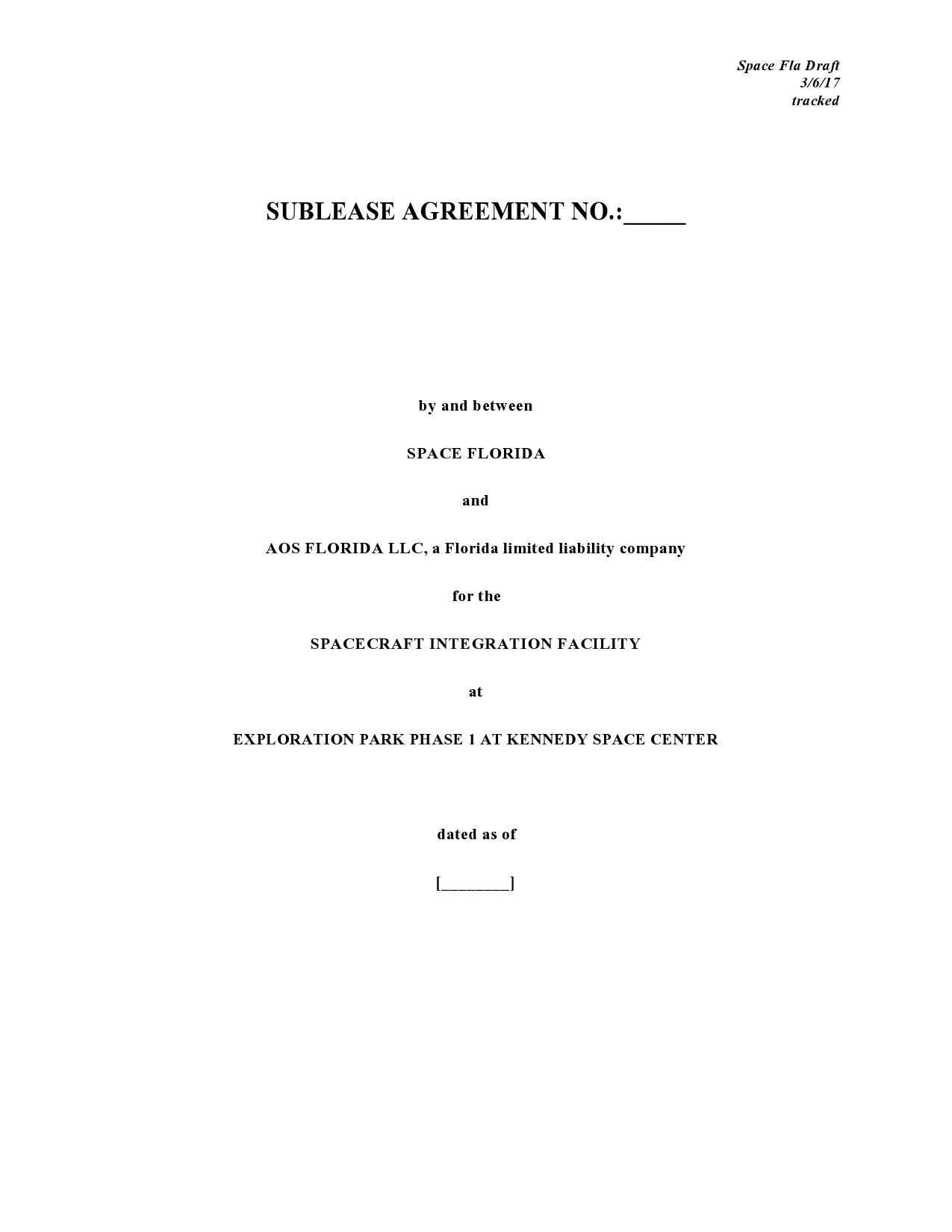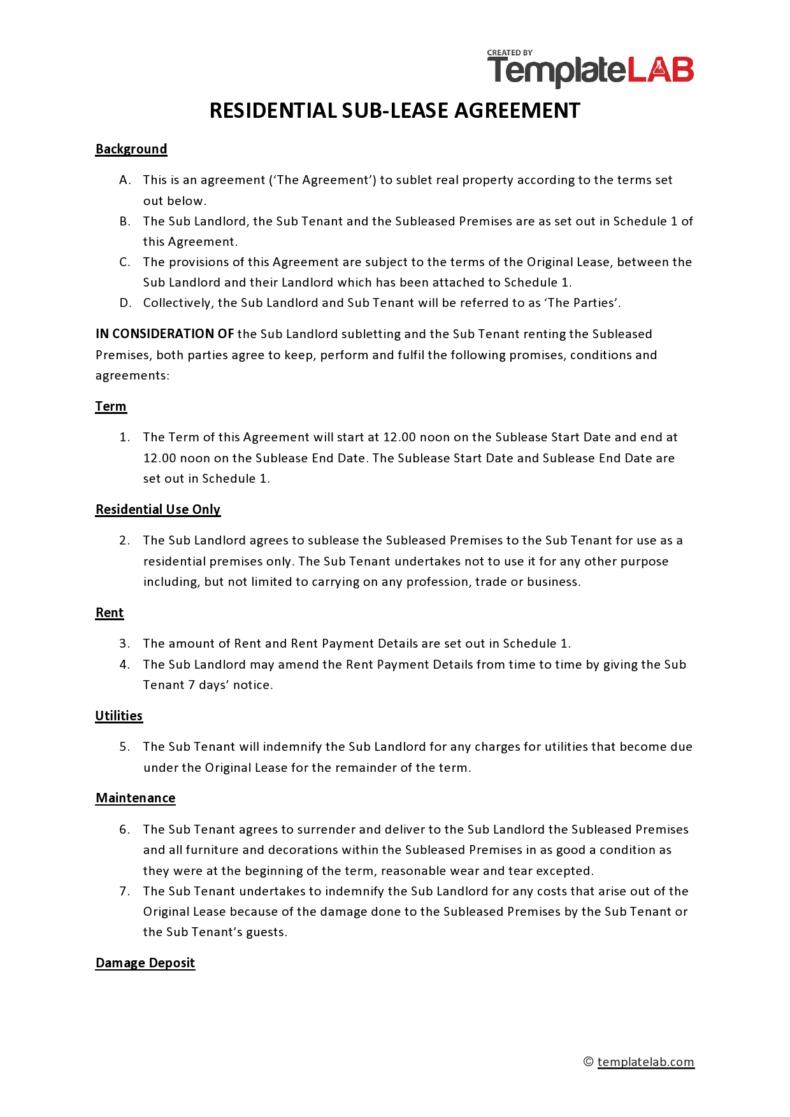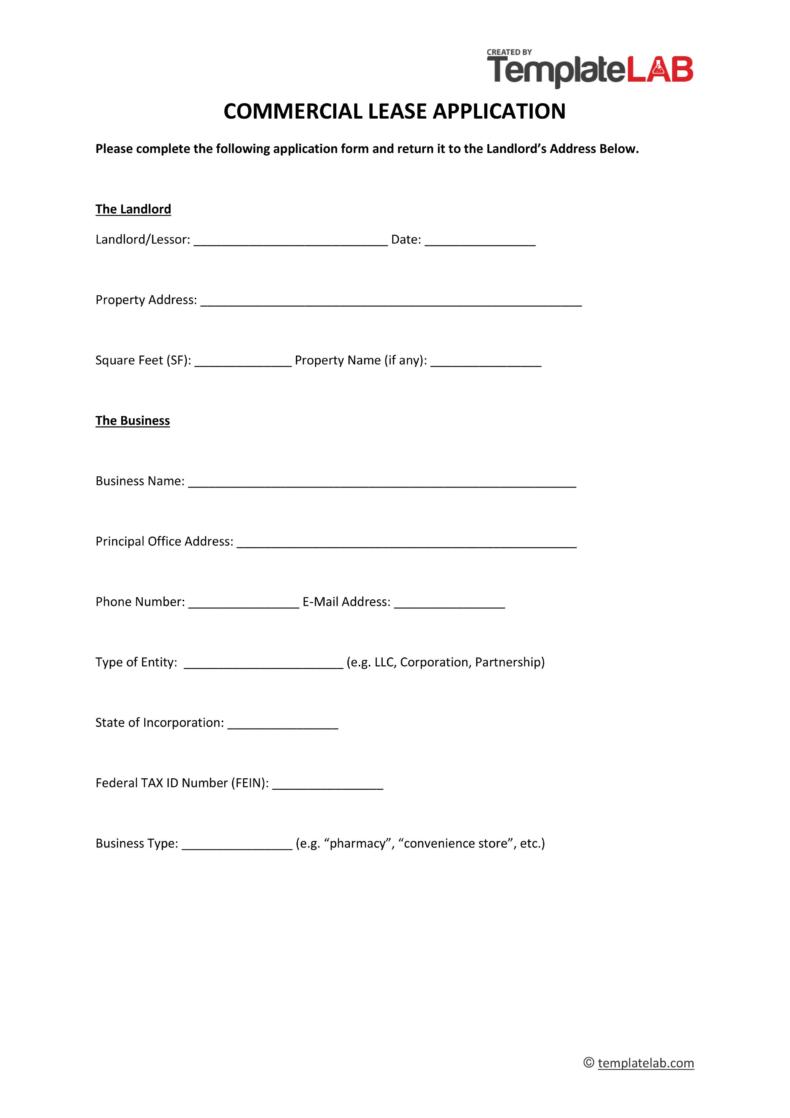A commercial sublease agreement allows one tenant to leave their original lease and put a new tenant in place. This allows them to not break the terms of the lease, which can be costly, while still getting out of the original agreement because they found someone else who is willing to use the space and take over the agreement.
Table of Contents
- 1 Commercial Sublease Agreements
- 2 What is a Commercial Sublease Agreement?
- 3 Business Sublease Agreements
- 4 When Can I Sublease a Commercial Property?
- 5 What Should I Do Before Subletting a Commercial Property?
- 6 Office Sublease Agreements
- 7 What are the Key Elements of a Commercial Sublease Agreement?
- 8 How Do You Write a Sublease Proposal?
- 9 Commercial Sublease Templates
- 10 The Risk of a Sublease Agreement
- 11 FAQs
Filling a commercial lease can take some time. You must find another company that would like to take over the lease and follow the terms that you agreed with in the beginning. You must also get the landlord to agree with your choice before writing out a new agreement as well. This can take some time but provides you with a way to move on when the lease no longer serves its purpose.
Let’s take a closer look at how a commercial sublease agreement works and what steps you need to take to make a sublease agreement for your commercial property.
Commercial Sublease Agreements
By State
What is a Commercial Sublease Agreement?
As a business owner, you likely entered into a rental agreement with your landlord in order to use the space available. Over time, you may find the space no longer meets your needs, you have to relocate, or you need to close the doors and move on to something else. When that happens, you may need to consider subleasing the property if you are not to the end of your rental agreement.
A commercial sublease agreement is basically a legal document that will include three parties. These three parties typically consist of:
- A business entity that is in need of a commercial property to rent out. This entity will be the sublessee or a subtenant.
- The lessee who currently occupies the space. This will be the sublessor or the sublandlord.
- Commercial property owner: This is the entity that owns the property and would be considered the landlord.
A commercial sublease will take the time to outline the conditions of the new rental agreement on the commercial property. It effectively lets the lessee out of their rental agreement by putting a new business entity in place. The terms of the agreement may stay the same, but it depends on the situation.
Not all commercial property owners will allow for a commercial sublease agreement. Many do not want the hassle of finding a new tenant or changing their lease in the middle of the term. Others will be fine with it as long as the rent is paid.
Business Sublease Agreements
When Can I Sublease a Commercial Property?
Most commercial subleases take time to organize and a good deal of thought. The original company leased out the property because they thought it was the best decision for them at the time. Situations may change and they need to look at some other options to help them conduct business or even close down their business.
There are several different situations where you may want to consider subletting a commercial property. these include:
- You need to relocate: If your business needs to relocate to a new part of town, or even to a new town, then you may want to sublease the office space.
- You need to close: Maybe your business is not doing well and you don’t want to hold on until the end of your lease. A sublease can allow you to close the doors and move on to another adventure.
- Not the right amount of space: The property you lease may be too big, or even too small, for your current needs. Subleasing the current space and finding somewhere new may be the best option for you here.
The terms and conditions that you add to your sublease agreement must match and agree with the terms and conditions found in the original commercial lease agreement. You may also still be on the hook for the property until the terms of the original lease are up. If the sublessee does not make their rental payments, you may be the one who owes the money.
What Should I Do Before Subletting a Commercial Property?
When you want to sublease commercial space, there are a few steps to follow. You are the one on the hook for the original lease agreement, so you need to take a look at the terms of the original lease and see if subleasing is even allowed. Some leases will allow you to sublease the commercial property, but there may be specific situations and rules where this can occur. There are also restrictions most of the time.
After reading the lease and determining that subleasing is allowed, you must notify the landlord about your plans. The original lease may include exact instructions on how you should do this. Many leases ask you to give a minimum of 30-days’ notice to let the landlord know. You may need to write the notice out too.
If the original lease does not list out the exact steps you must use to sublease the property, then you can contact them to ask what they would prefer. This can keep everyone alert to the situation and opens the door to great communication.
Office Sublease Agreements
What are the Key Elements of a Commercial Sublease Agreement?
Whether you would like to look over a sublease agreement that the other party provided or you are drawing up one of your own, you will need to have several sections present to help ensure all aspects are covered and nothing gets left behind. Some of the most common areas to cover include:
- All information about the parties concerned. This will include the full legal names of all parties, their addresses, and any relevant contact information.
- A description of the commercial property: This should be as detailed as possible. If only part of the property is being subleased, then a description of which part should be included in the commercial sublease agreement.
- Rent and operating expenses: The business sublease agreement should include the full cost of rent, including the operating expenses that the business will need to consider when moving in.
- Sublessor obligations: The office sublease agreement will list out all of the obligations, including rent and length of lease, that the sublease will need to follow.
- Sublessee obligations: These will list out the responsibilities of the sublessee and a statement that they will respect the terms and conditions of the master lease.
- Agreement term: This section will talk about the duration of the sublease right upfront. It may also include a section that discusses the conditions, if any, where the sublessee can extend the agreement if they choose.
- Security deposit: This will include the details, as well as the amount, of the security deposit. There should be details about when that amount will be returned and under which conditions.
- Remedies and defaults. These specifics will list out what will be considered a default in the agreement for both sides and how to remedy these issues.
Both parties must look over the commercial sublease agreement to ensure that they understand all of the requirements and agree to follow them.
How Do You Write a Sublease Proposal?
A sublease proposal can be as simple or as complex as you would like to make it. Many agreements will follow the original lease terms and will just include amendments with the information of the new tenant on them. If there will be some drastic changes, those can be written up as well. A few of the steps you can follow when writing a sublease proposal include:
- Contact the landlord in writing: The original tenant will need to contact the landlord in writing before they start any work with subleasing. They can read through the original lease to see which rules to follow for this. Most of the time, this must be done in writing. The landlord reserves the right to approve or disallow the new tenant to move in.
- Discuss the terms of the original lease: The three parties will need to get together to discuss the terms of the original lease. In some cases, this will be what the new subletter will need to follow when they move in. All tenants and the landlord need to be aware of these rules and agree to them.
- Discuss any changes to the terms: It is possible that new terms will be added to the lease. The landlord may change the amount of rent based on their risk factors, extend the lease terms, or offer other changes to the lease. These must be discussed, agreed upon, and written out to become a part of the new lease the subletter will follow.
- The start date and end date: There should be a clear start and end date to the new agreement. The start date will be when the original tenant is out and the new tenant moves into the property. The landlord and the subletter can discuss wen the end date will be. Many will finish out the original terms of the first lease and can then extend the date if they choose.
Giving the landlord more time to work with you can ensure that the new terms are acceptable to everyone. All parties must sign to make this a legally binding contract and to help everyone understand their new obligations.
Commercial Sublease Templates
The Risk of a Sublease Agreement
The landlord will need to do their due diligence when it comes to agreeing to the new sublease agreement. This type of agreement does not offer a lot of legal protections, which is why many landlords will request additional information on the new tenant before proceeding. Some of the information they may request includes:
- Name and all relevant information for the potential subletters.
- Details about the type of business the subletter plans to run in the commercial property.
- All of the financial details of the subletter to prove they are able to avoid the property.
- Information, if necessary, about the alterations the property will need to go through to work for the new subletter.
- Have the subtenant sign a commercial sublease agreement.
These agreements can provide a good deal of flexibility for the tenants of a commercial lease agreement, but they do have some risks. When these agreements are signed, there is always the possibility something will go wrong for one of the three parties.
For example, the original tenant will have risk regarding the behavior of the subletter they choose. If the subletter breaks the terms of the lease or does not make their payments, the original tenant is going to be on the hook. The original tenant needs to choose carefully before doing a sublease.
FAQs
Can I sublease commercial space?
This will depend on the terms of your original lease. You must take a look at the lease to determine whether the landlord allows this or not. Many will be fine with this as long as you check with them and allow them a chance to run a background on the new business entity. Some landlords do not want to allow this at all and it will specifically state this in the original lease.
Is a sublease agreement legally binding?
A sublease agreement is legally binding, just like the original lease. The parties signing it are agreeing to certain terms and conditions and they expect the other parties to stick with that agreement. If you sign a sublease agreement for a commercial property, you must agree to stick by the rules the landlord lays out for you. If you try to break the sublease agreement, you may have to pay fines and other penalties to the landlord.
How much notice should I give my landlord when subleasing?
This will depend on your local area and the rules required. More notice is often best to help the landlord prepare and complete any background checks, collect the security deposit, and finish any tasks they would like to get done. Most states require you give a minimum of 30-days’ notice before subleasing the property. Check local laws and your original lease document

